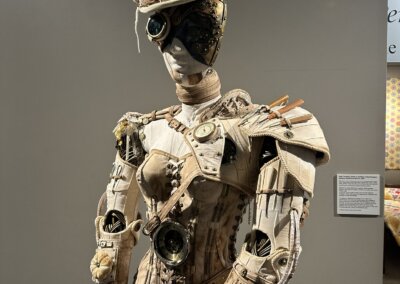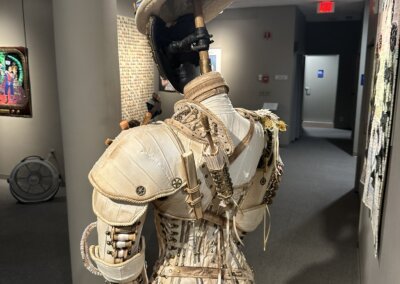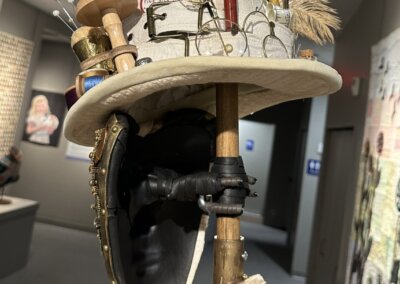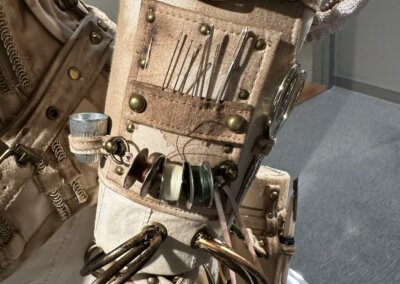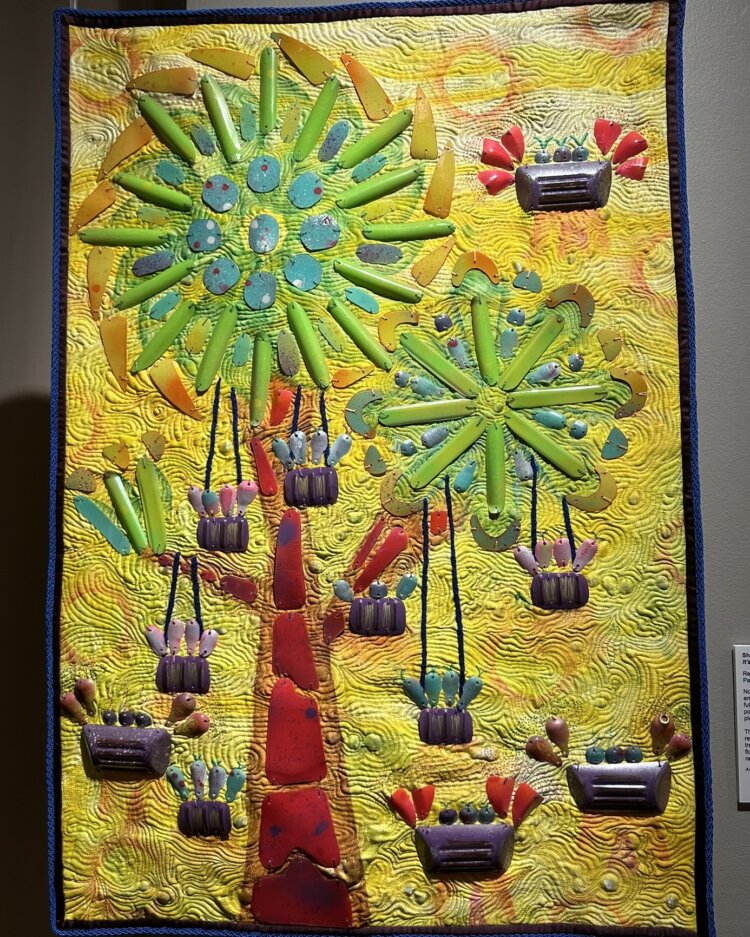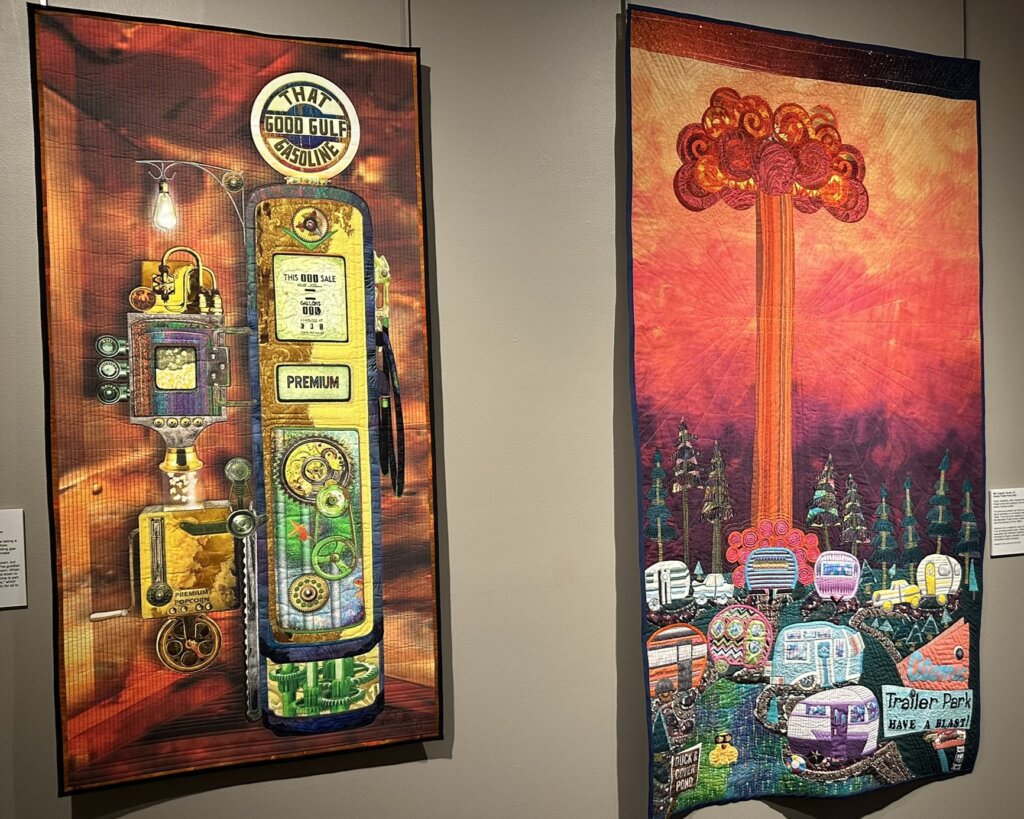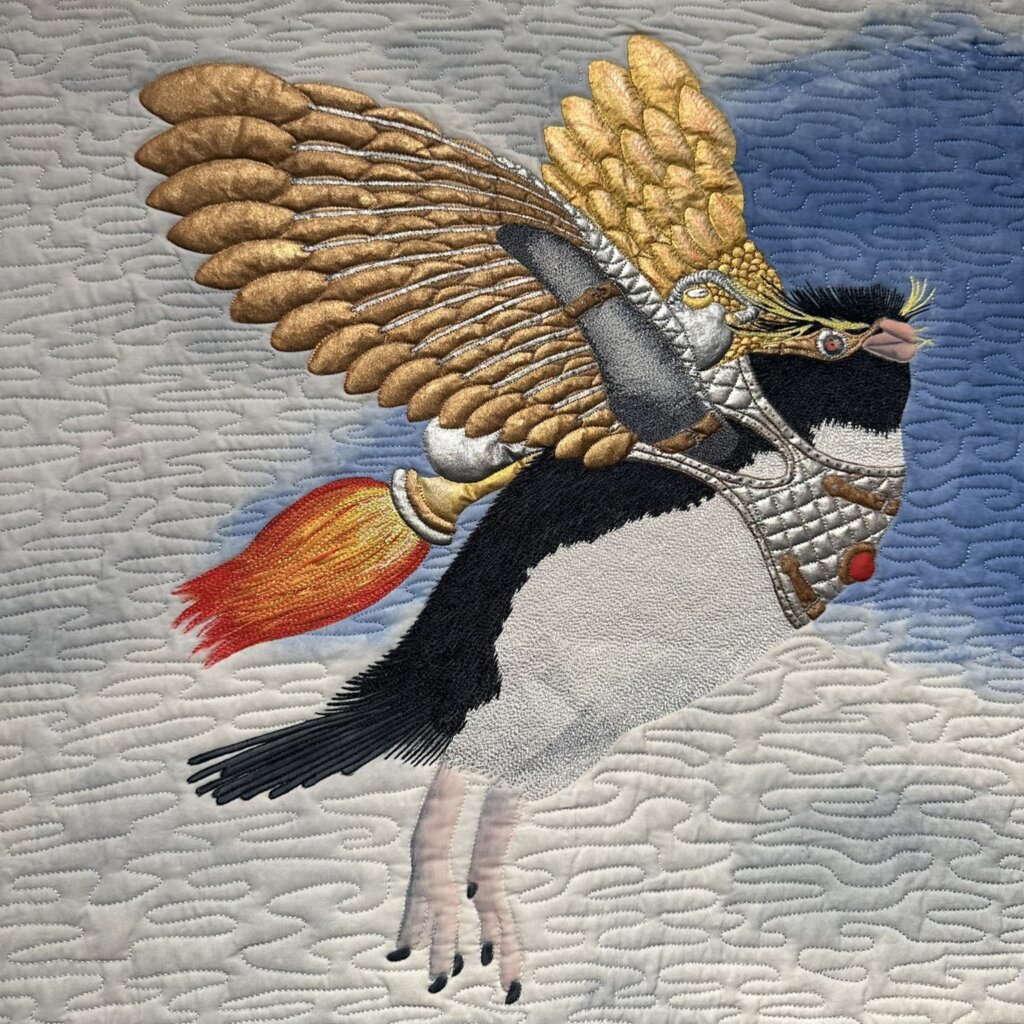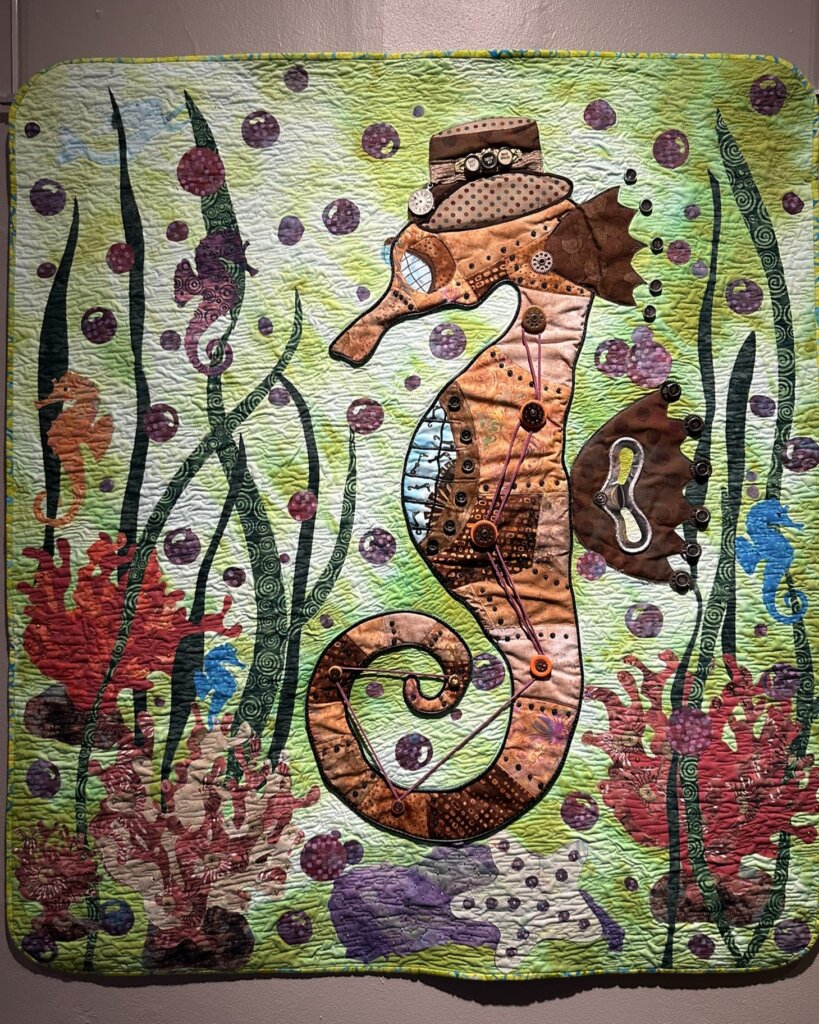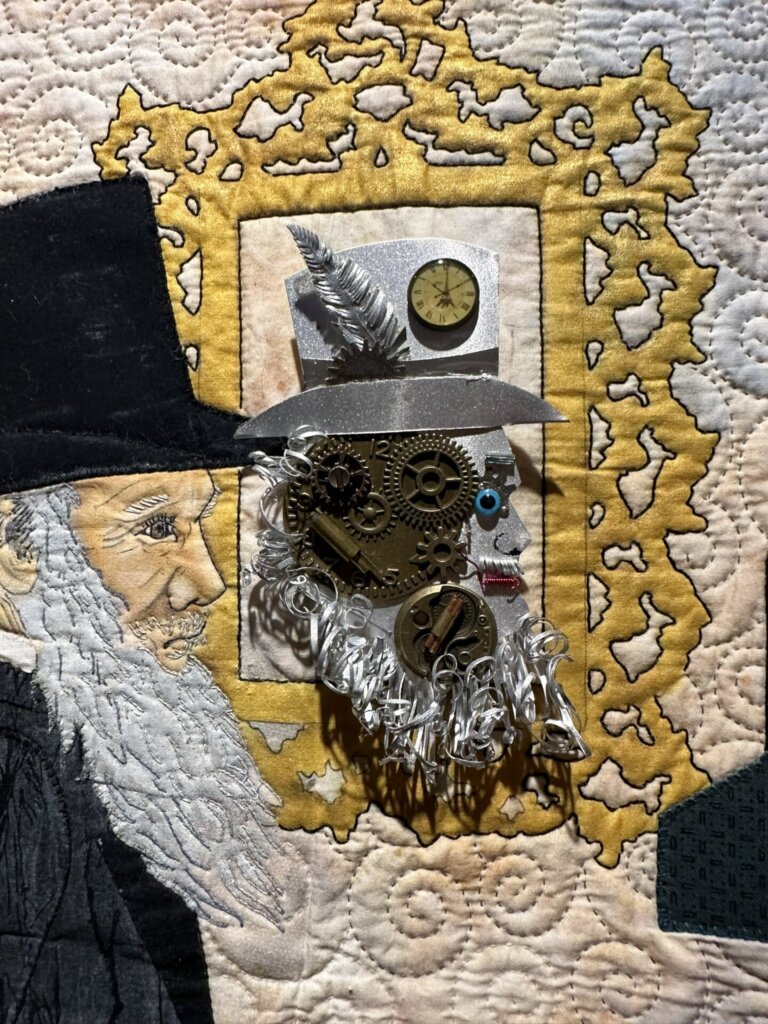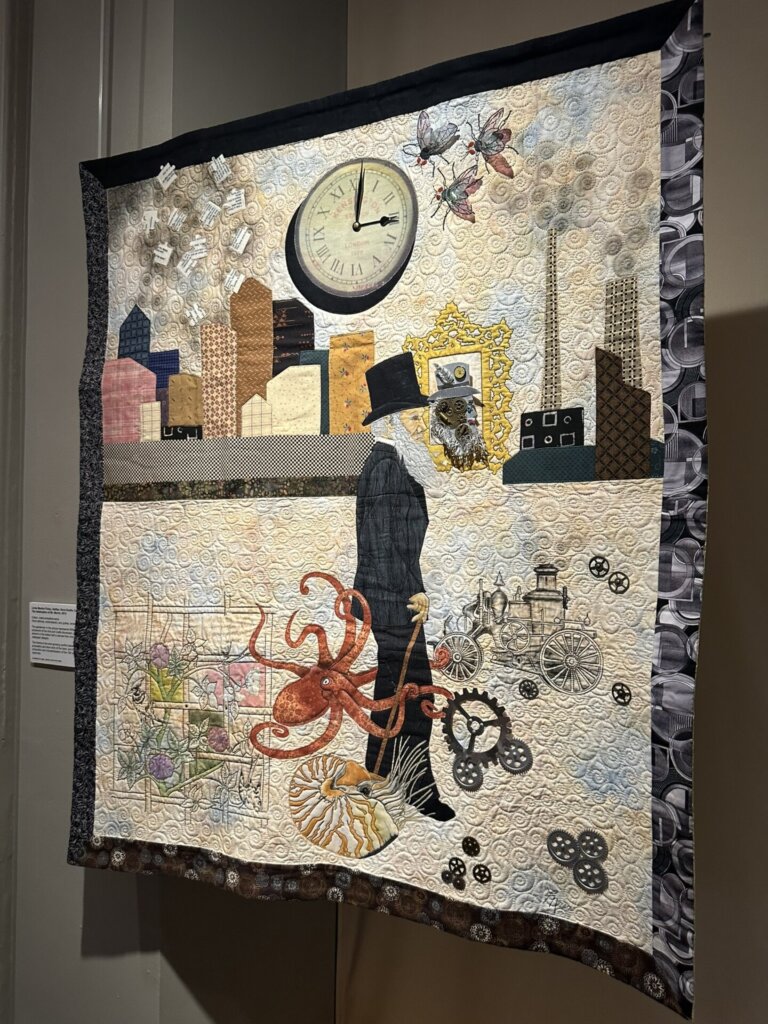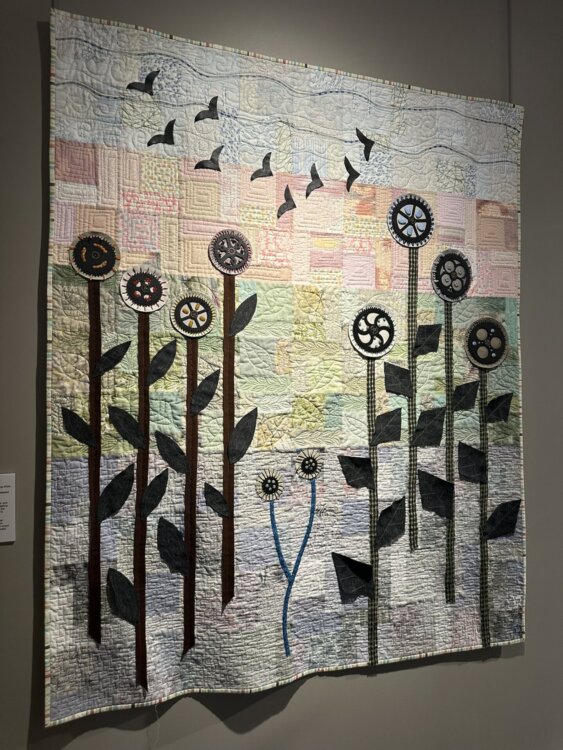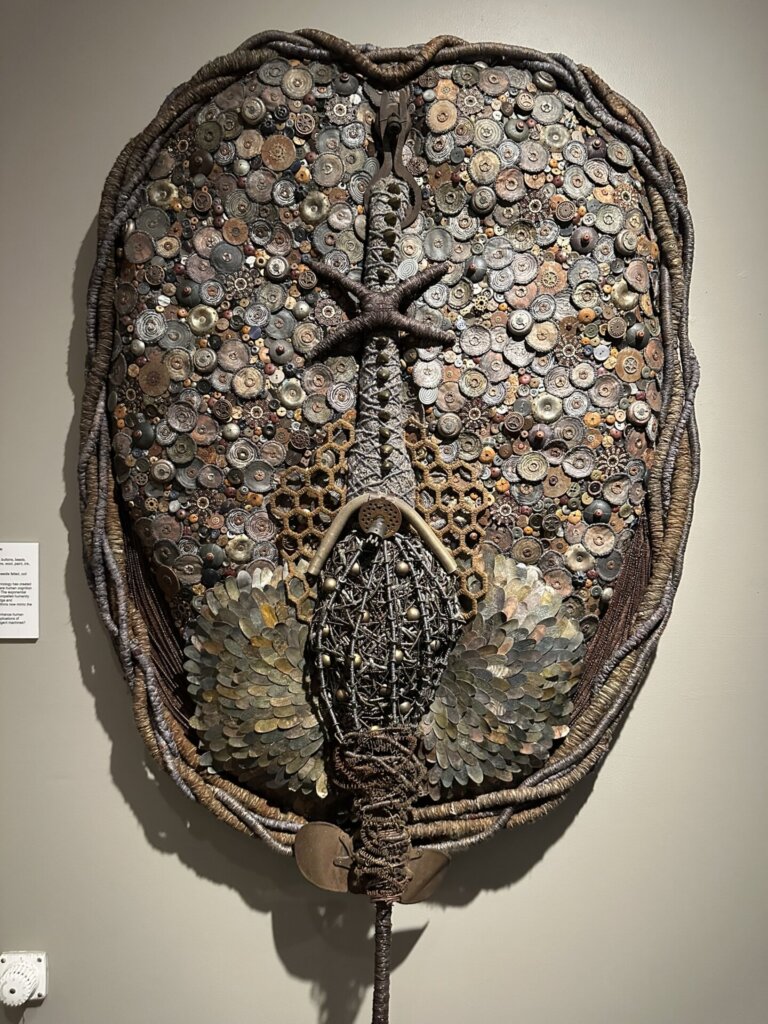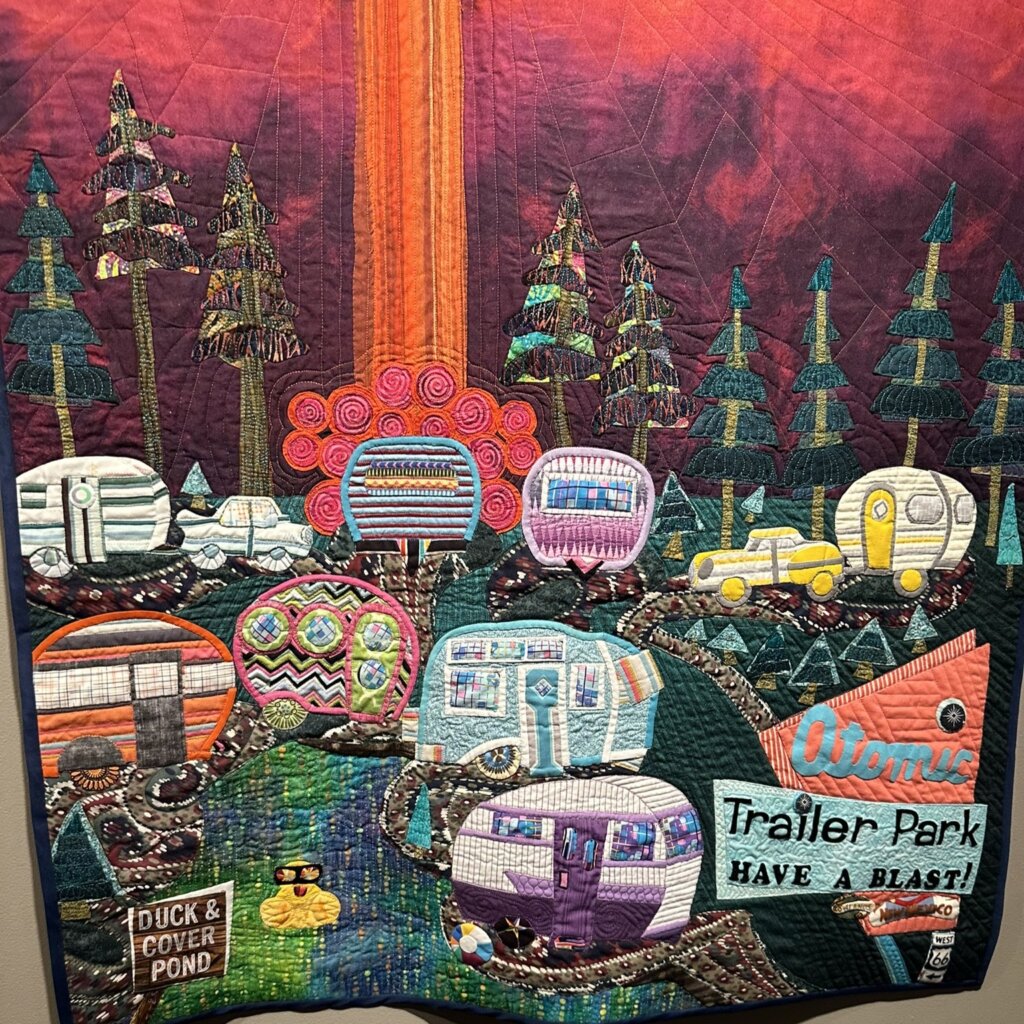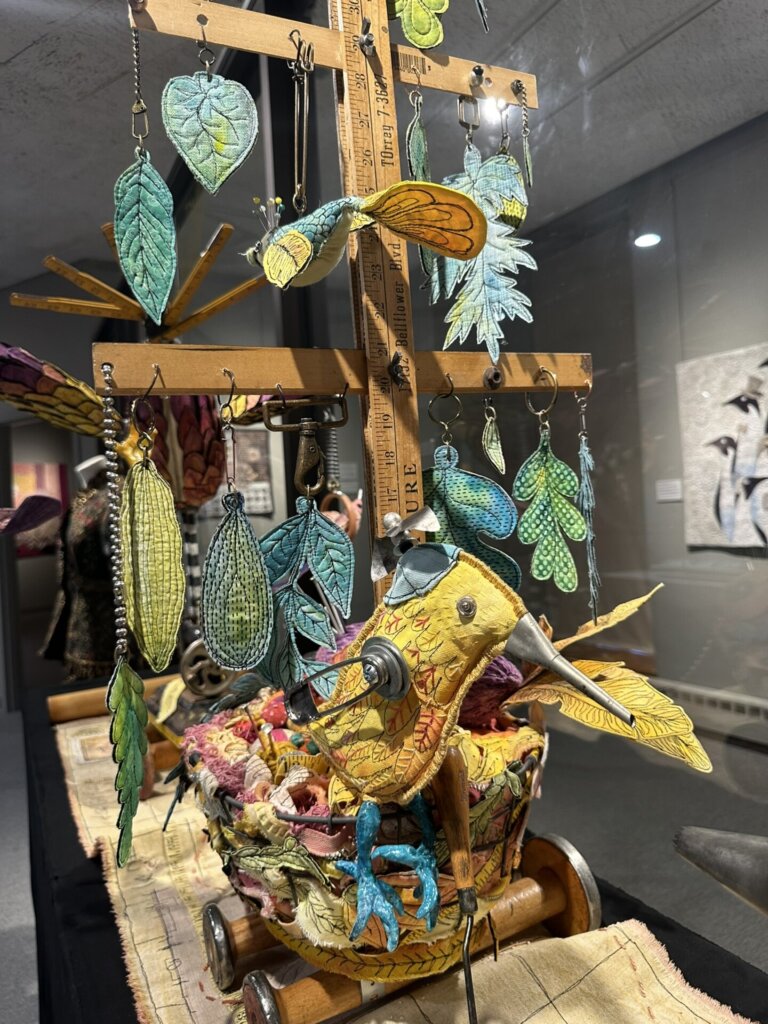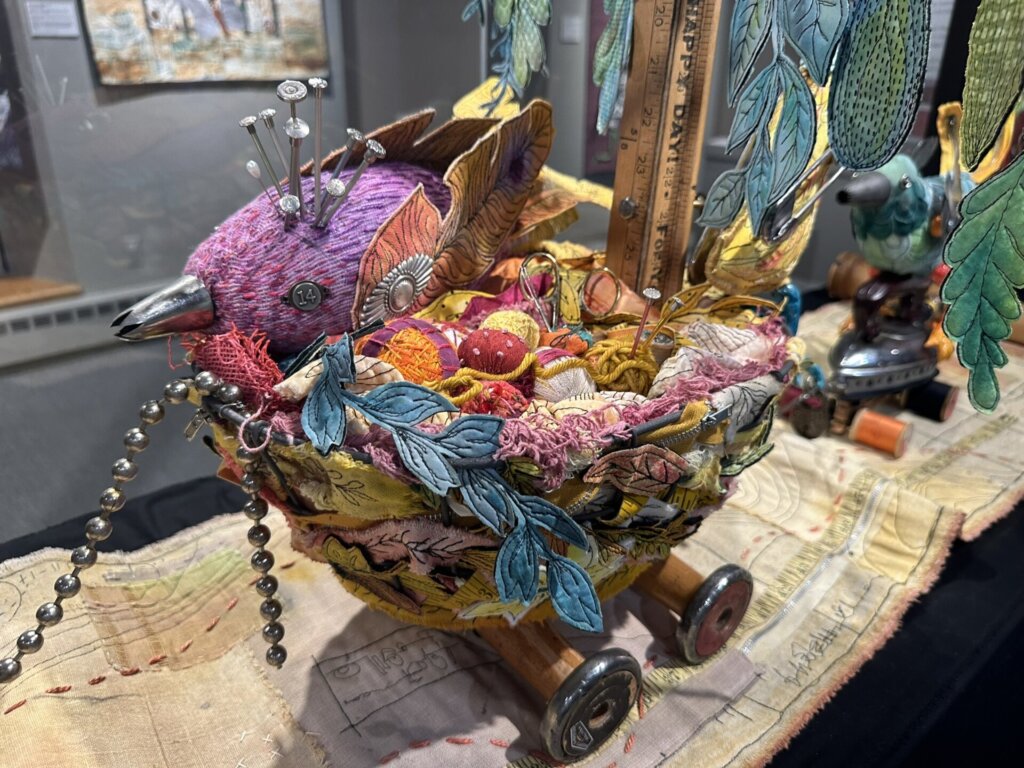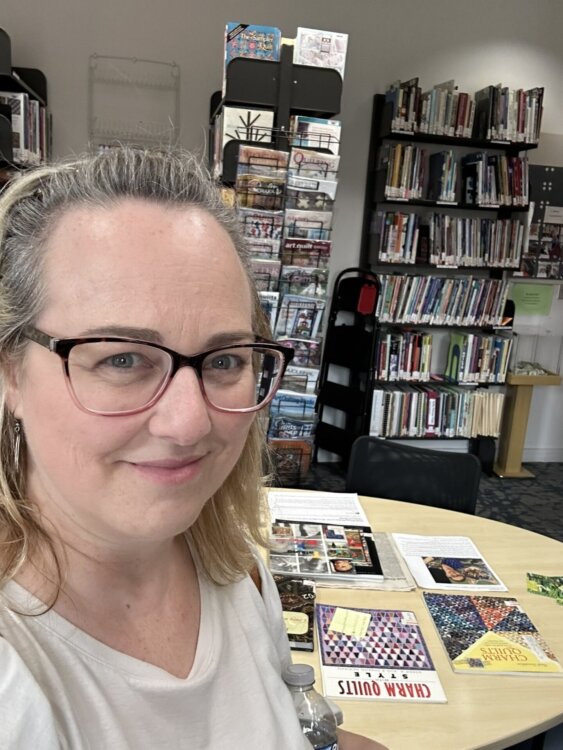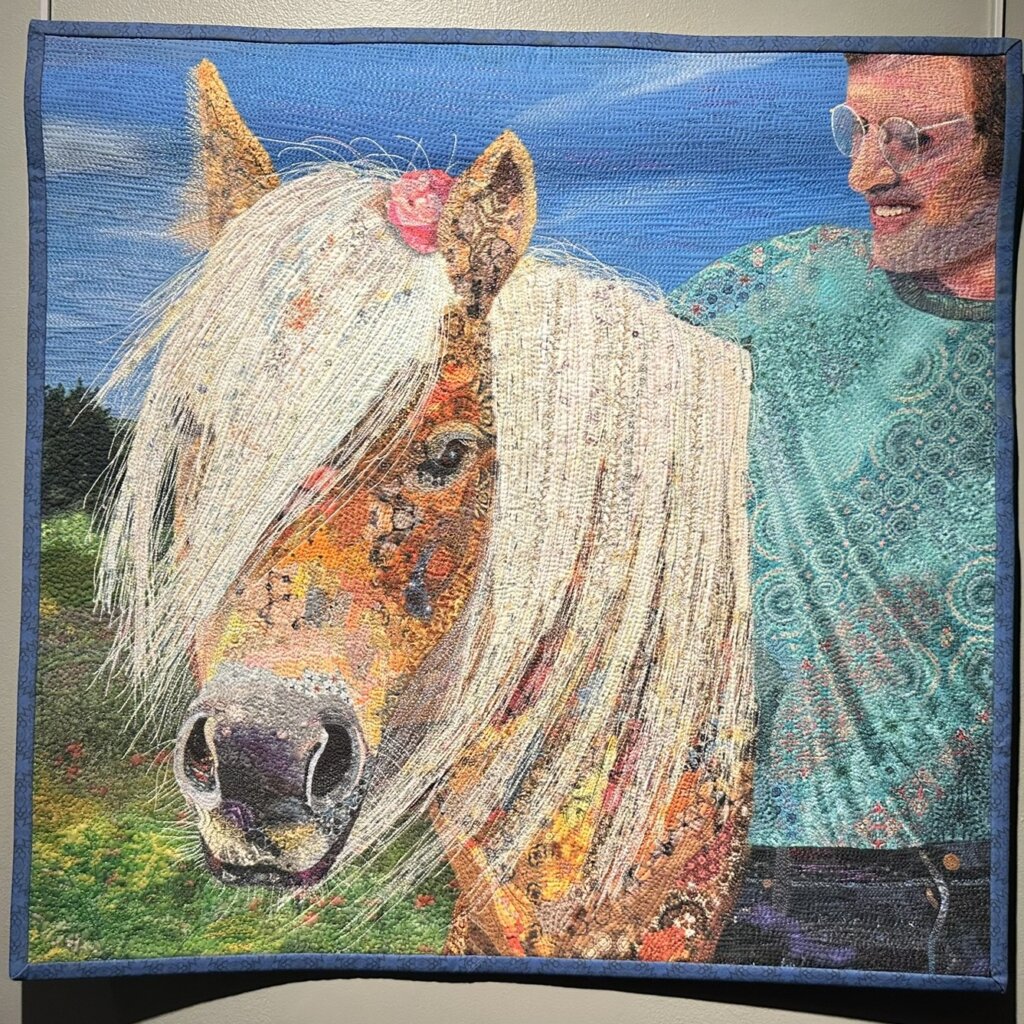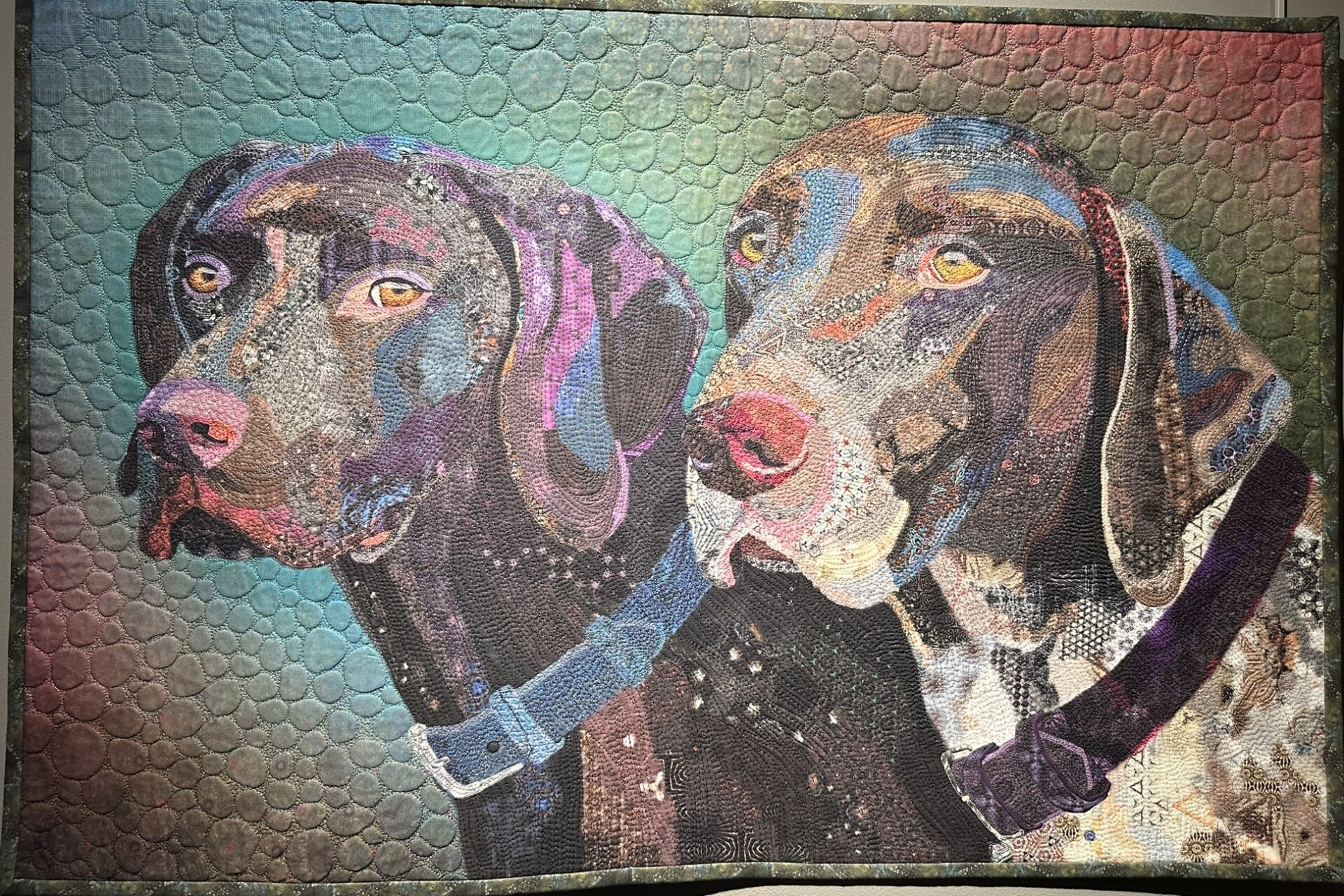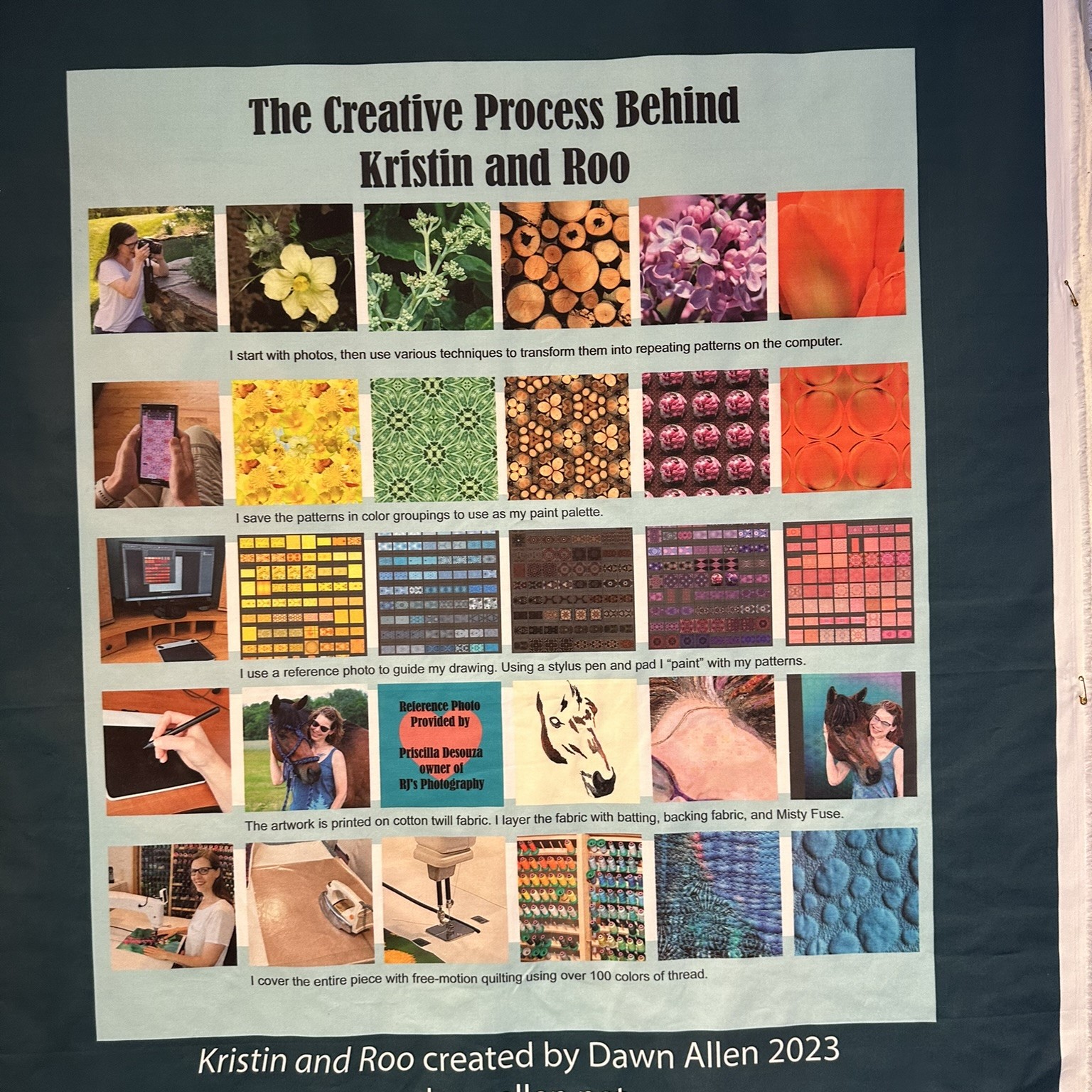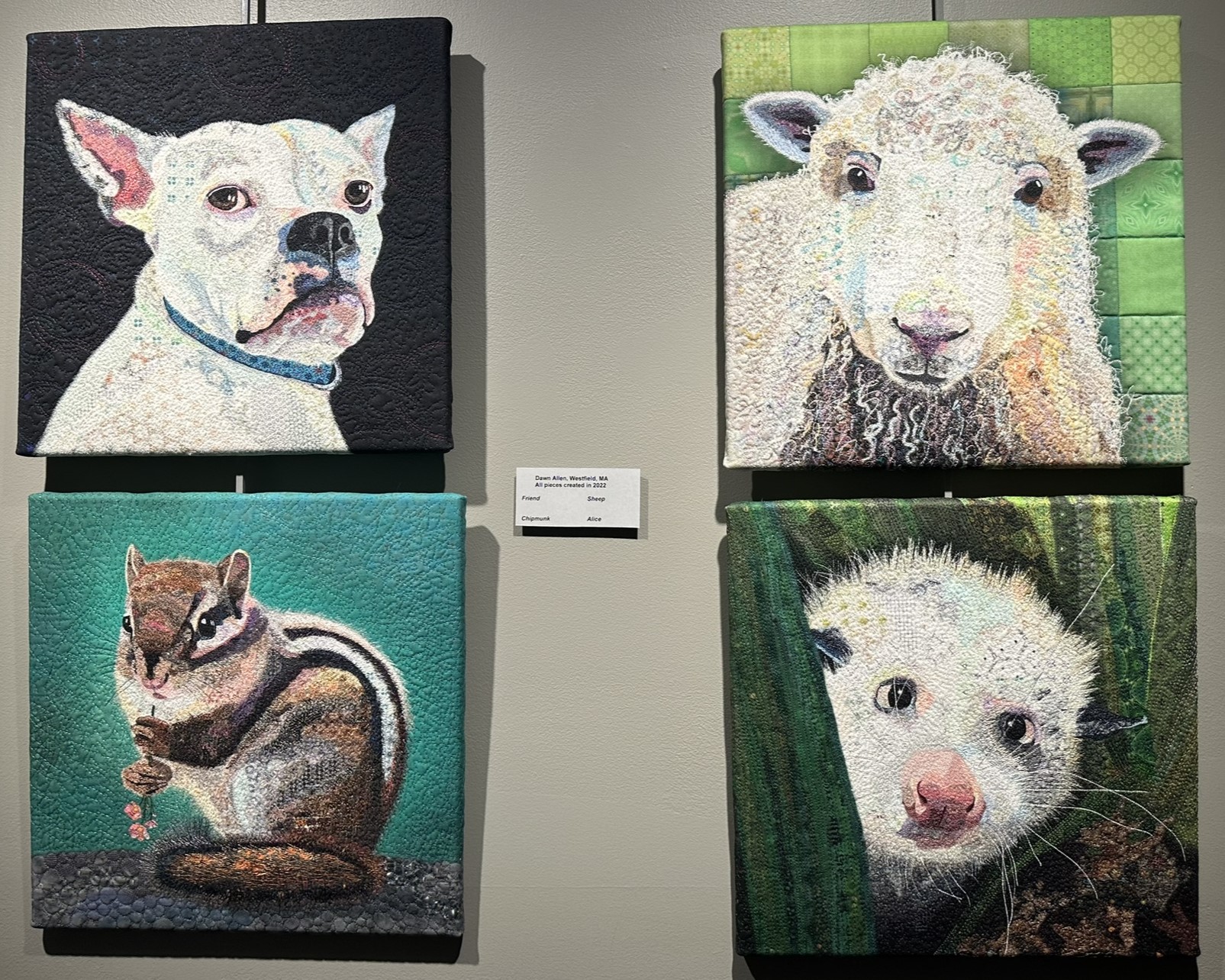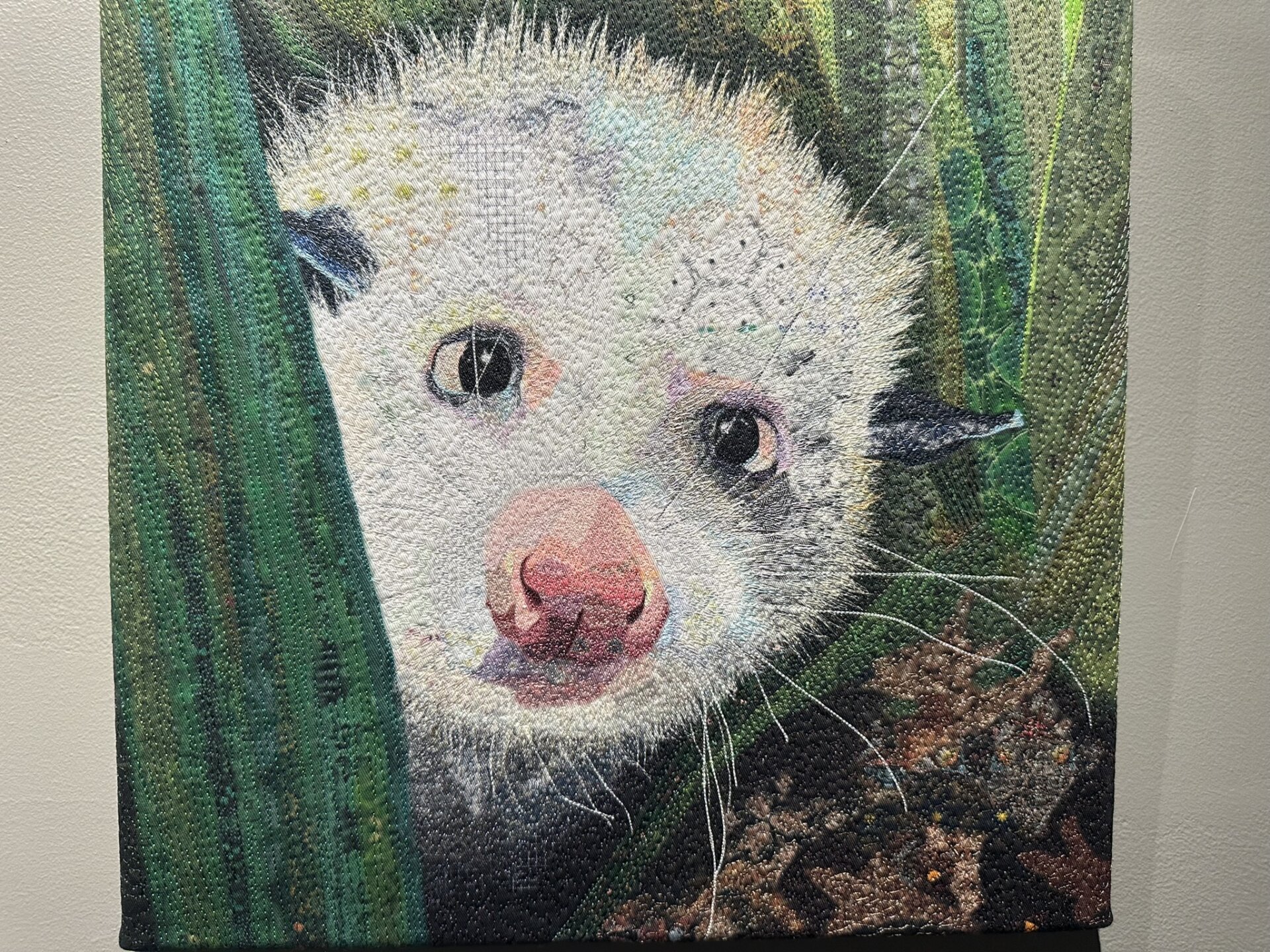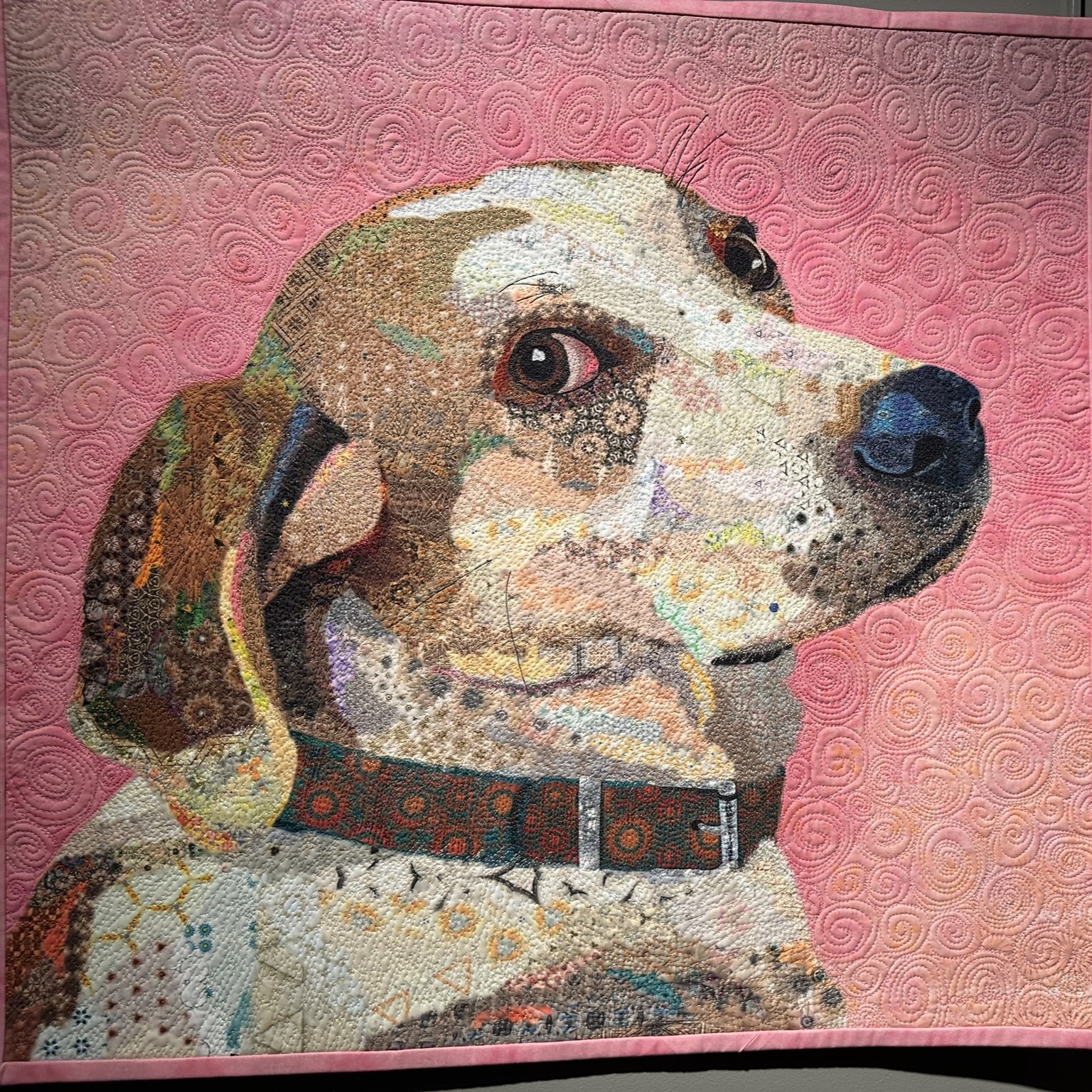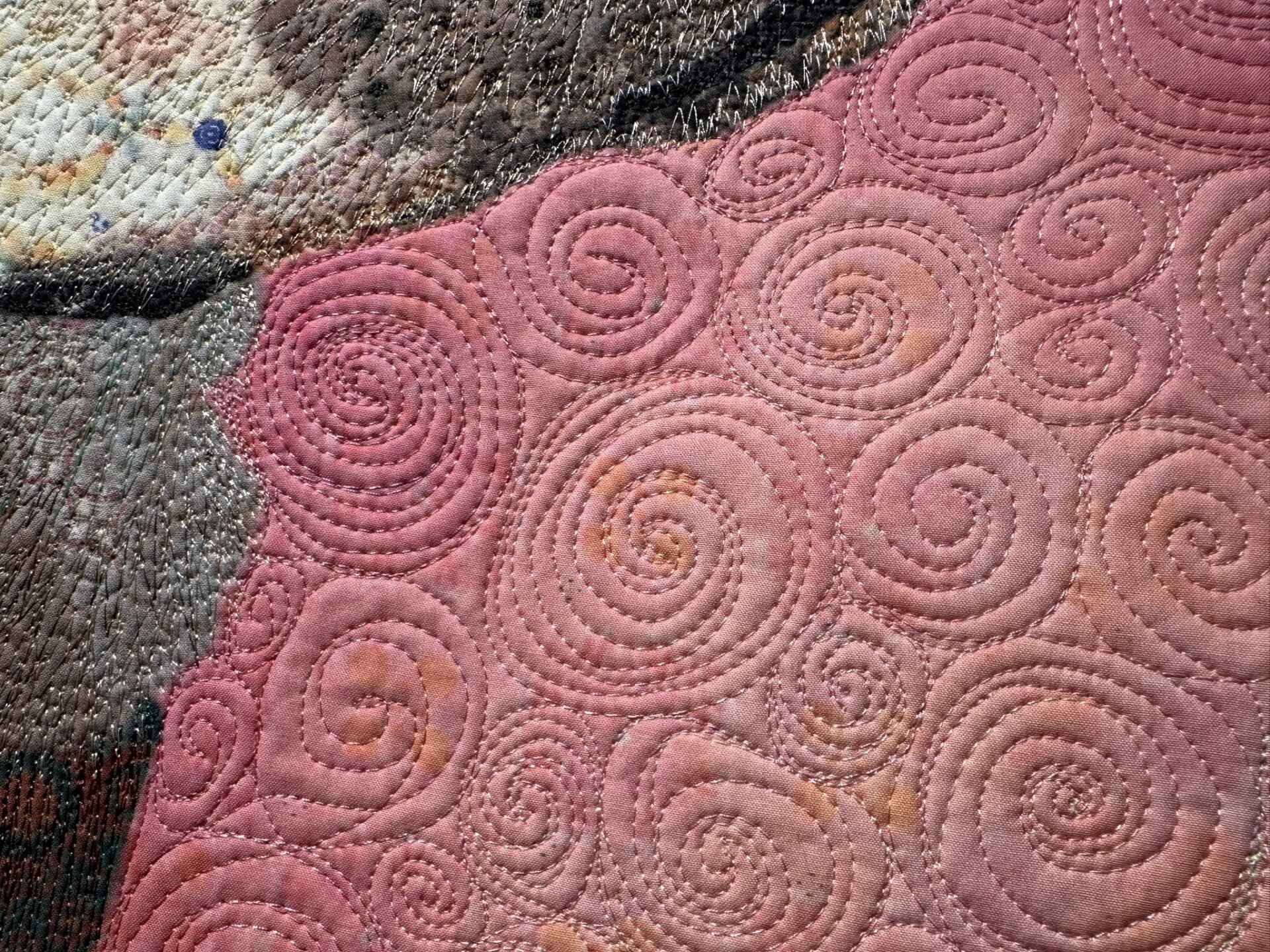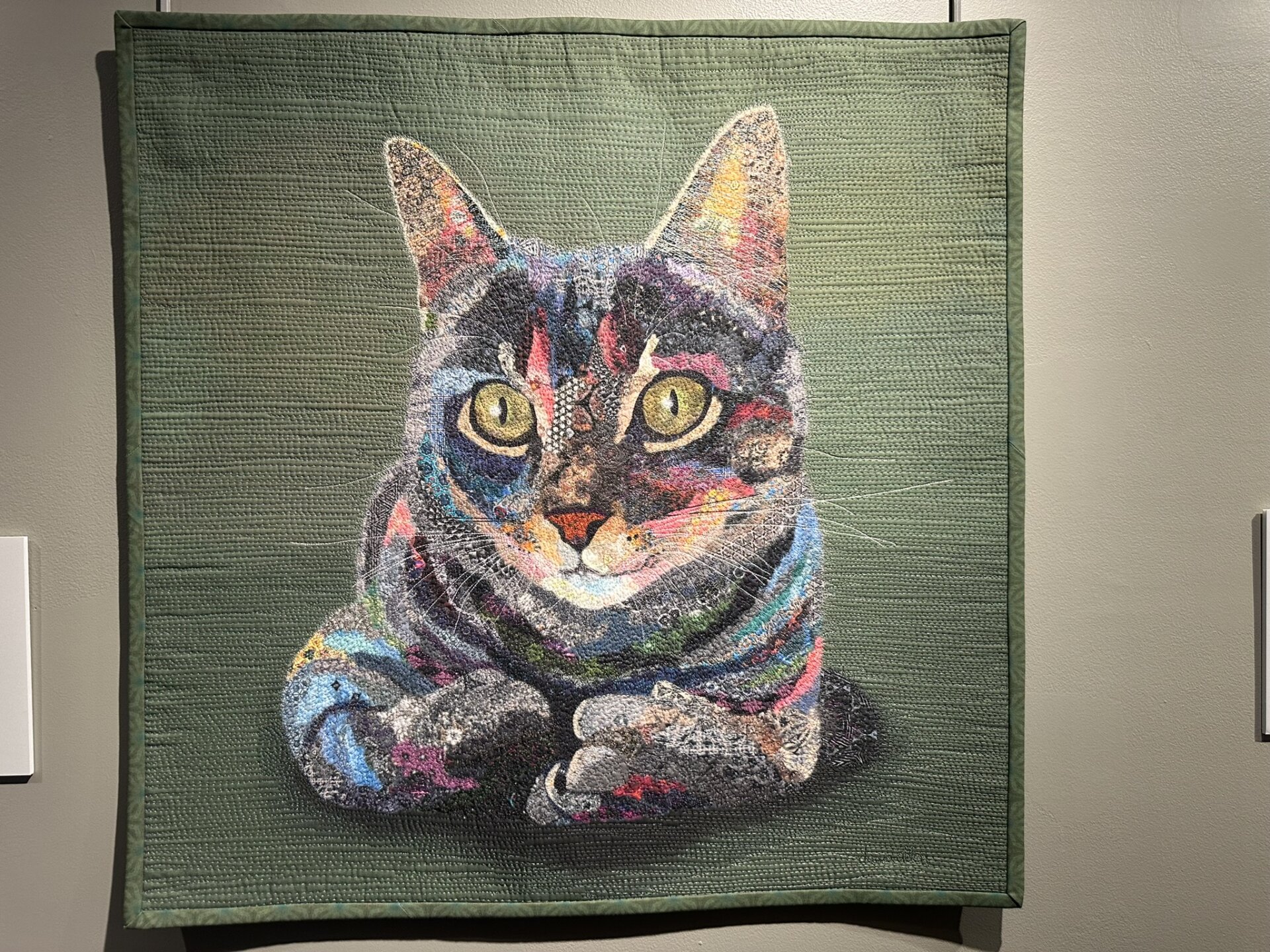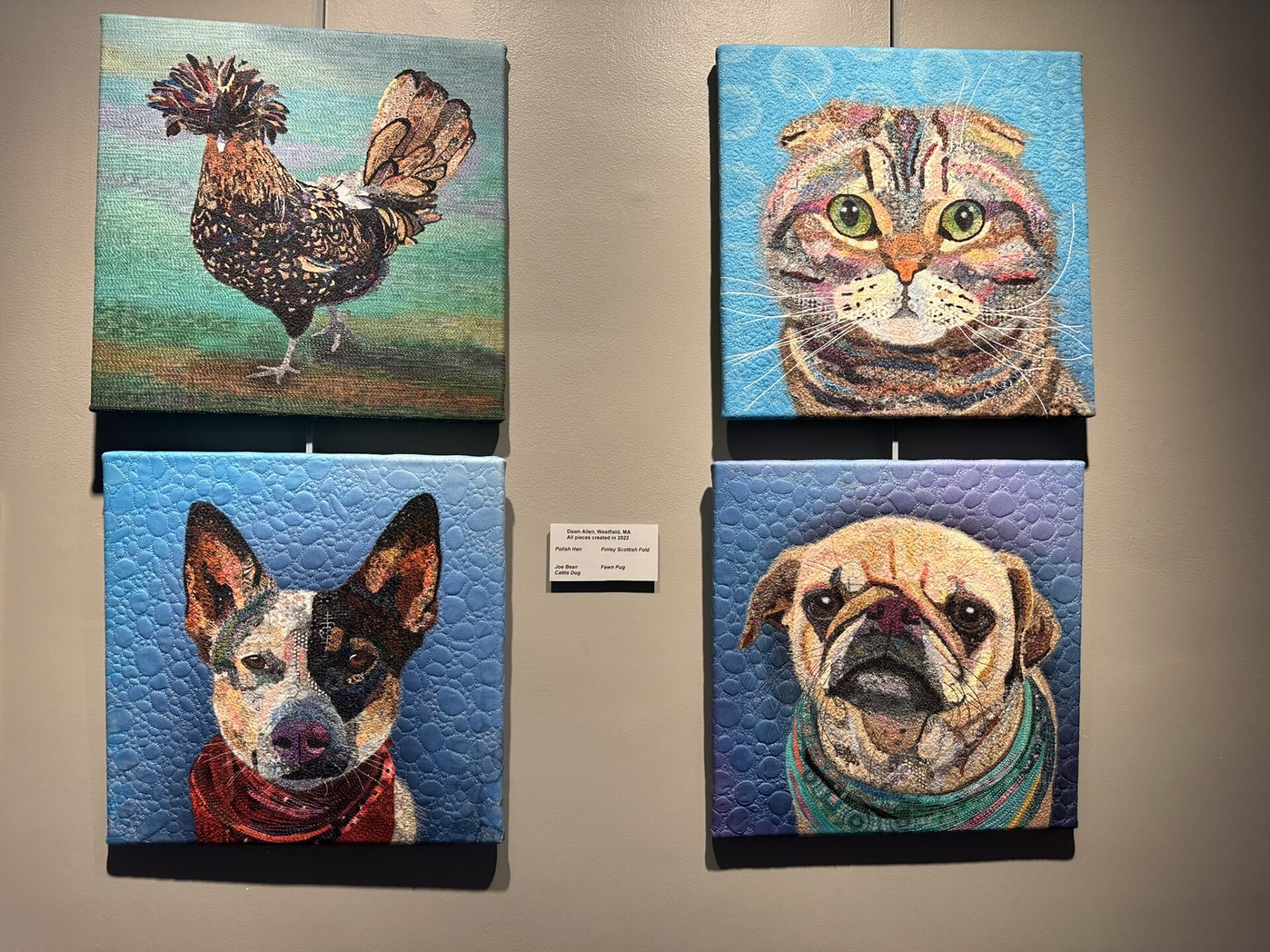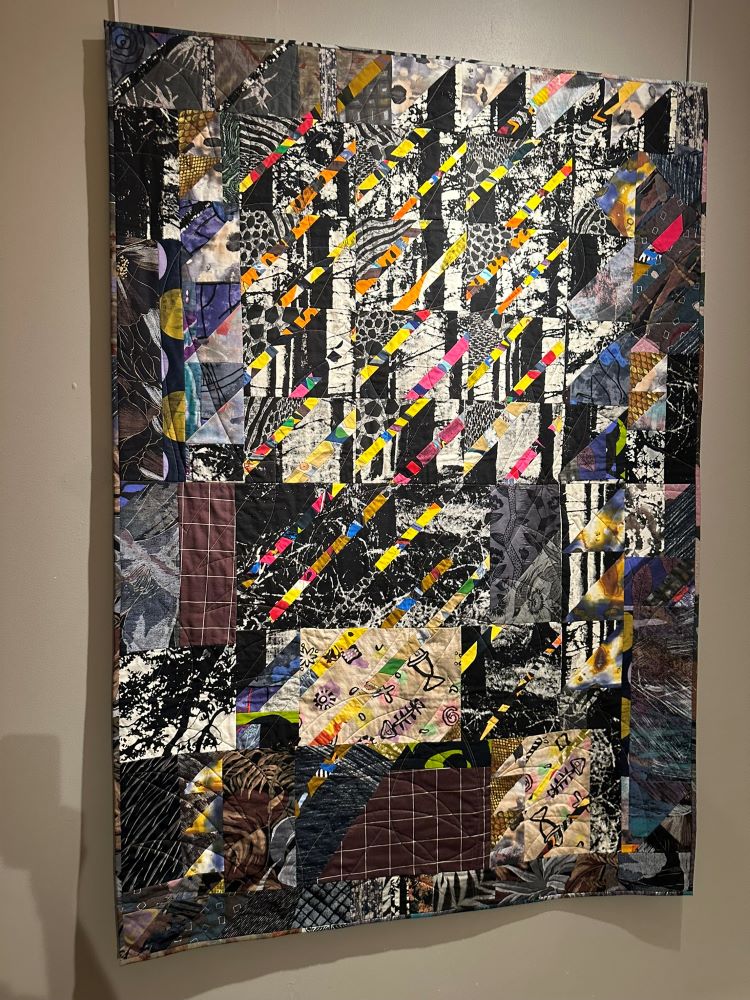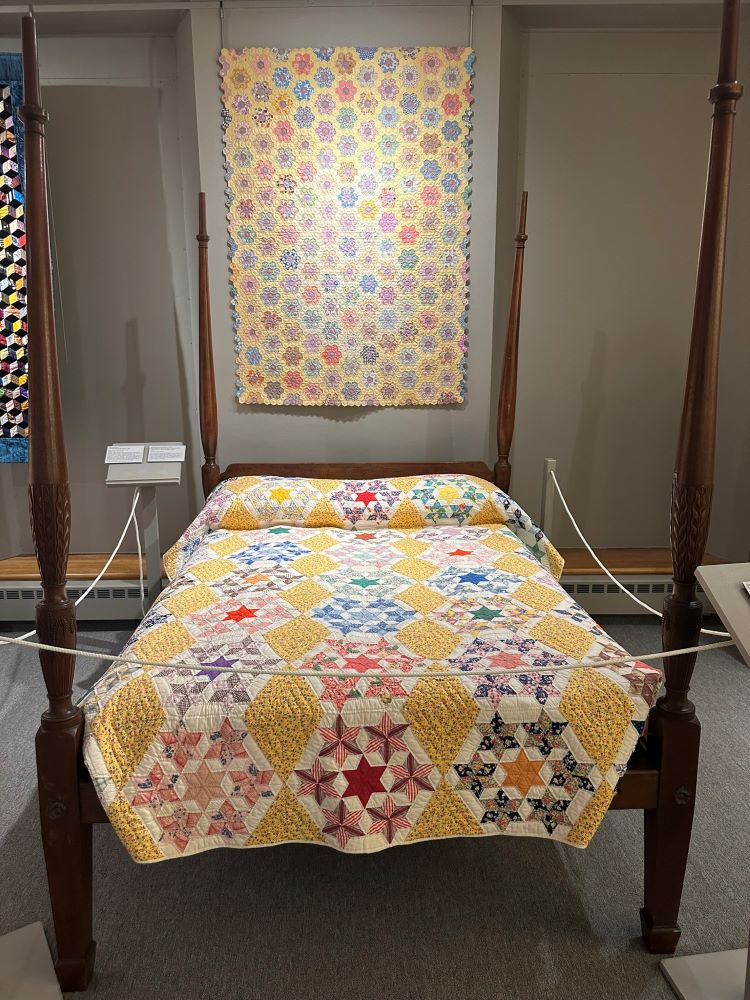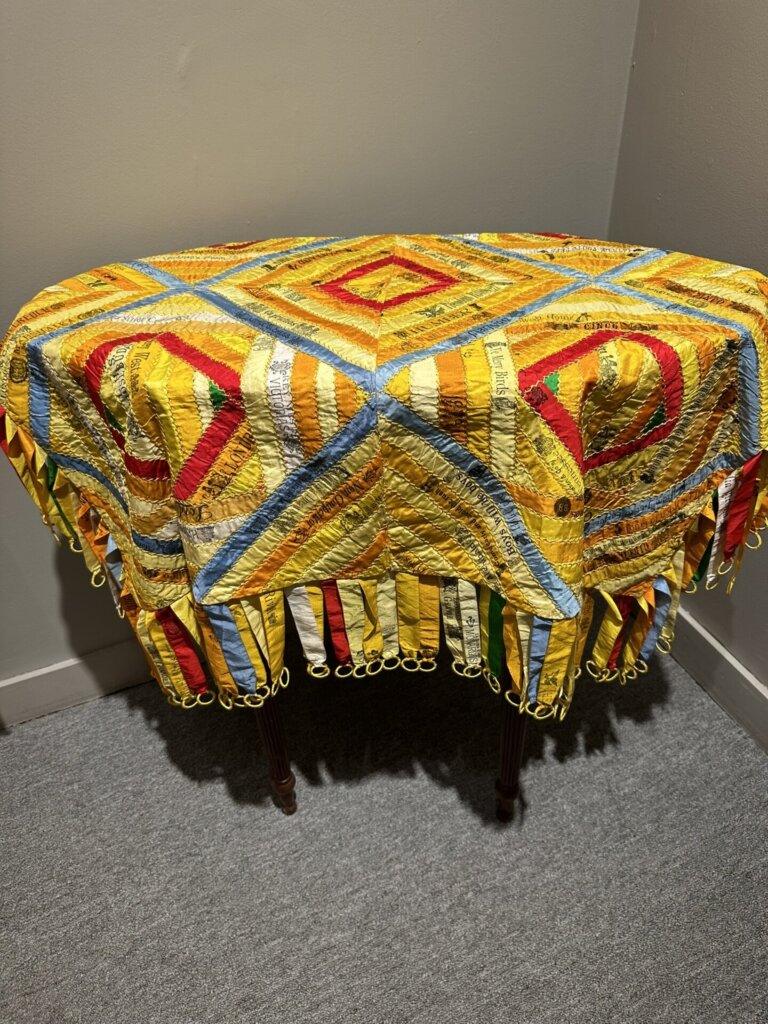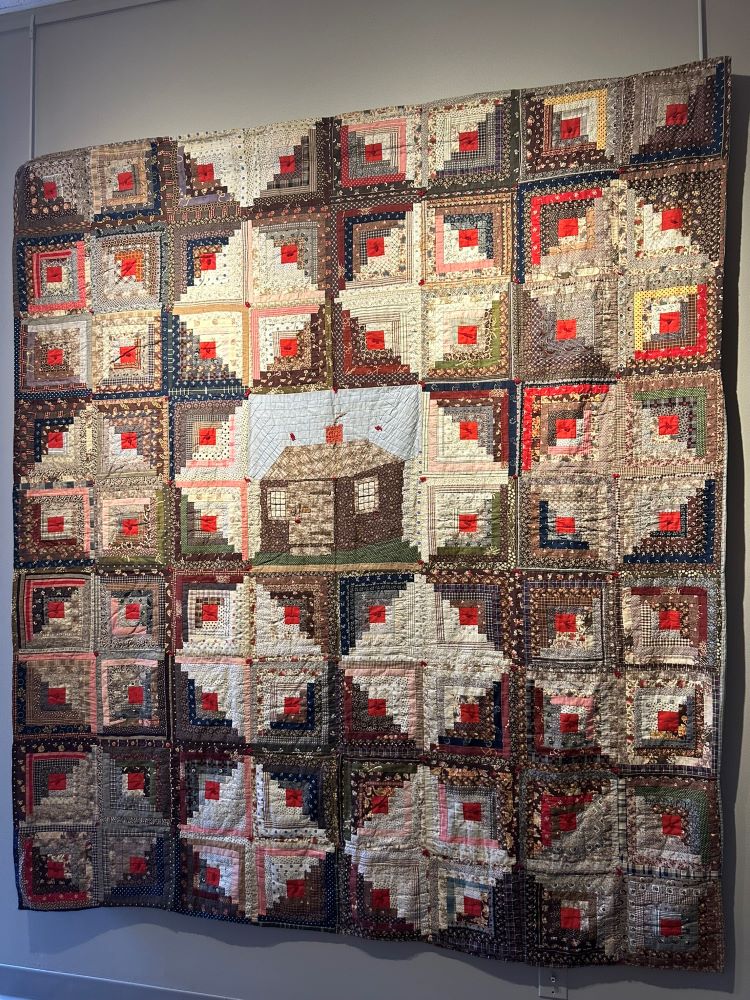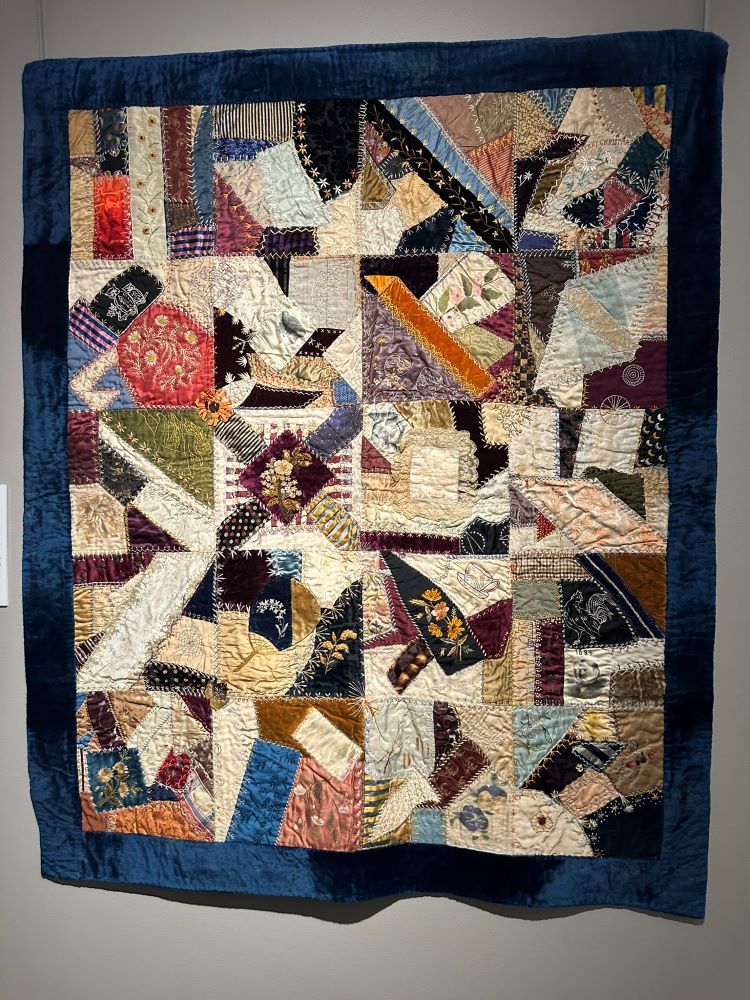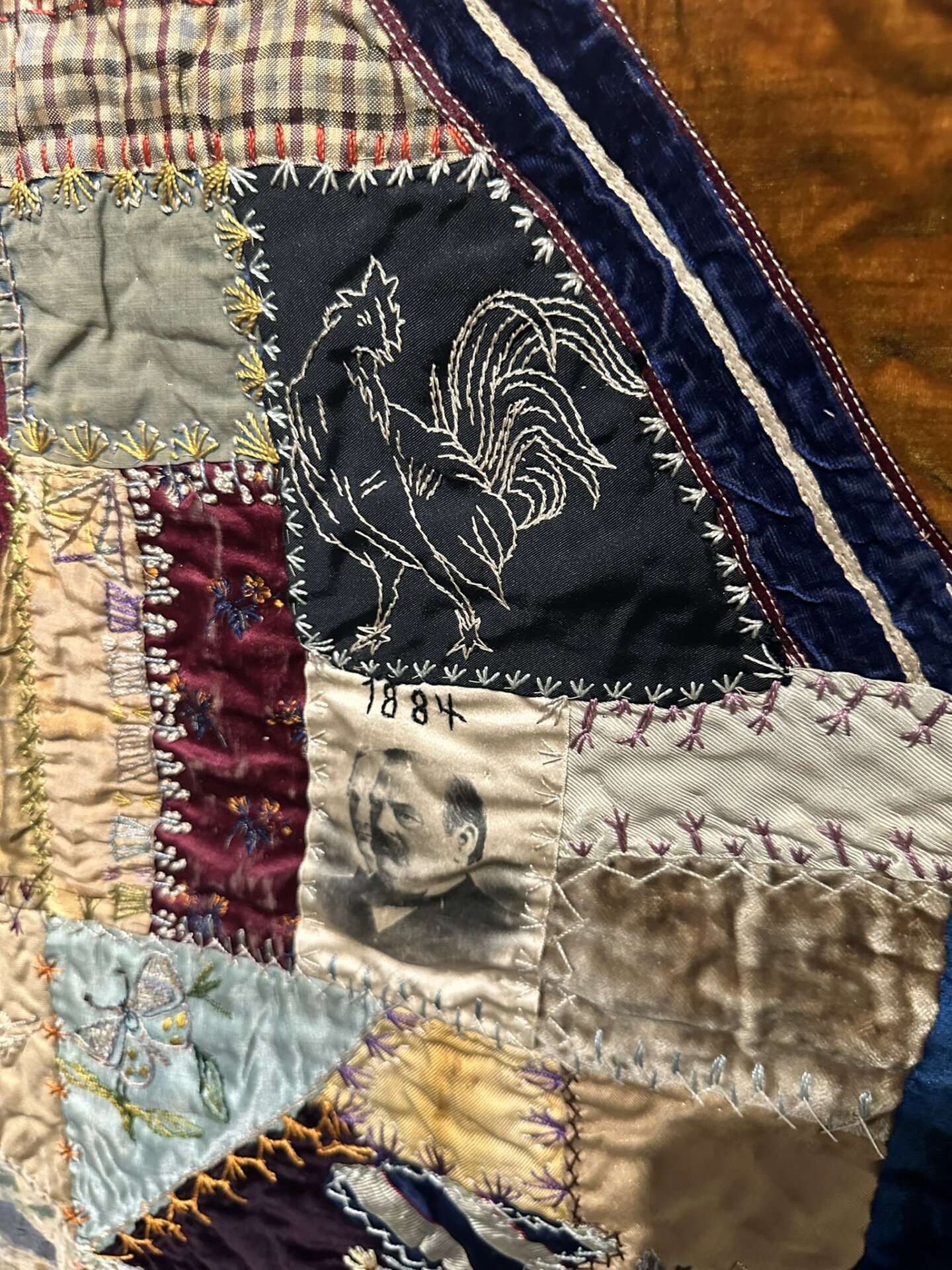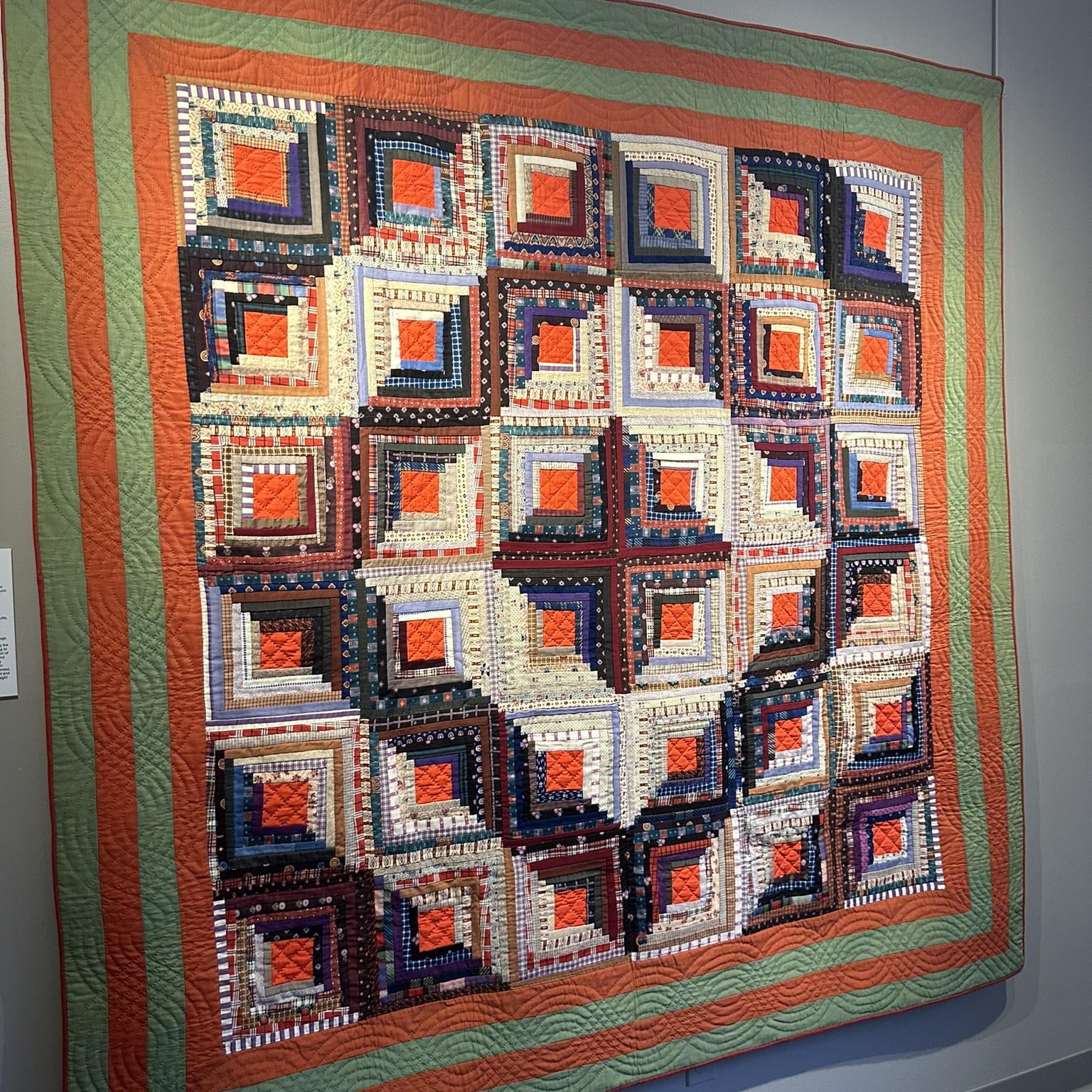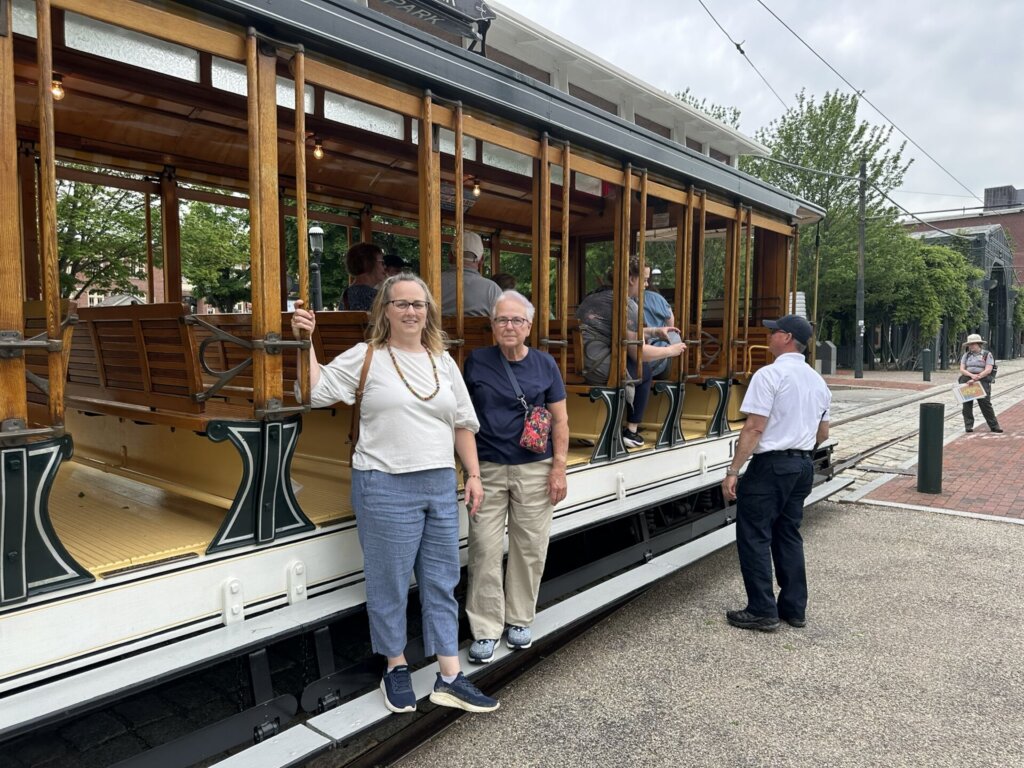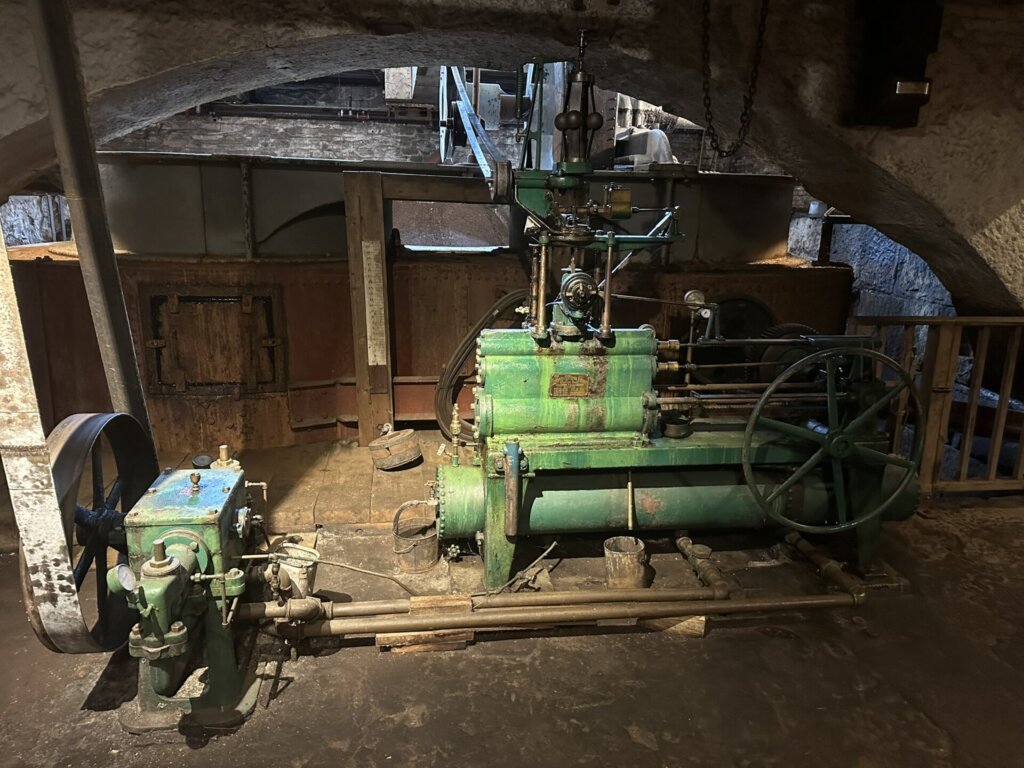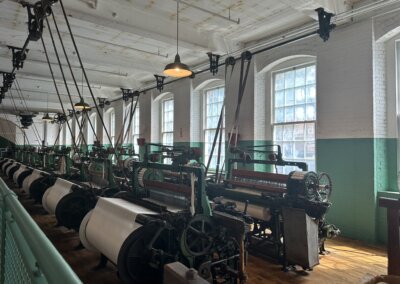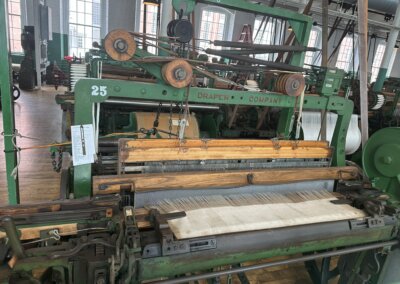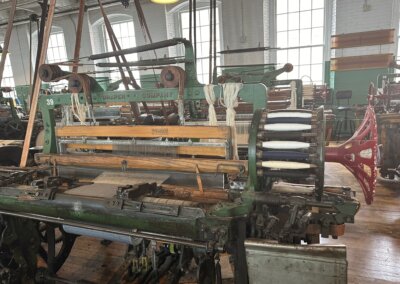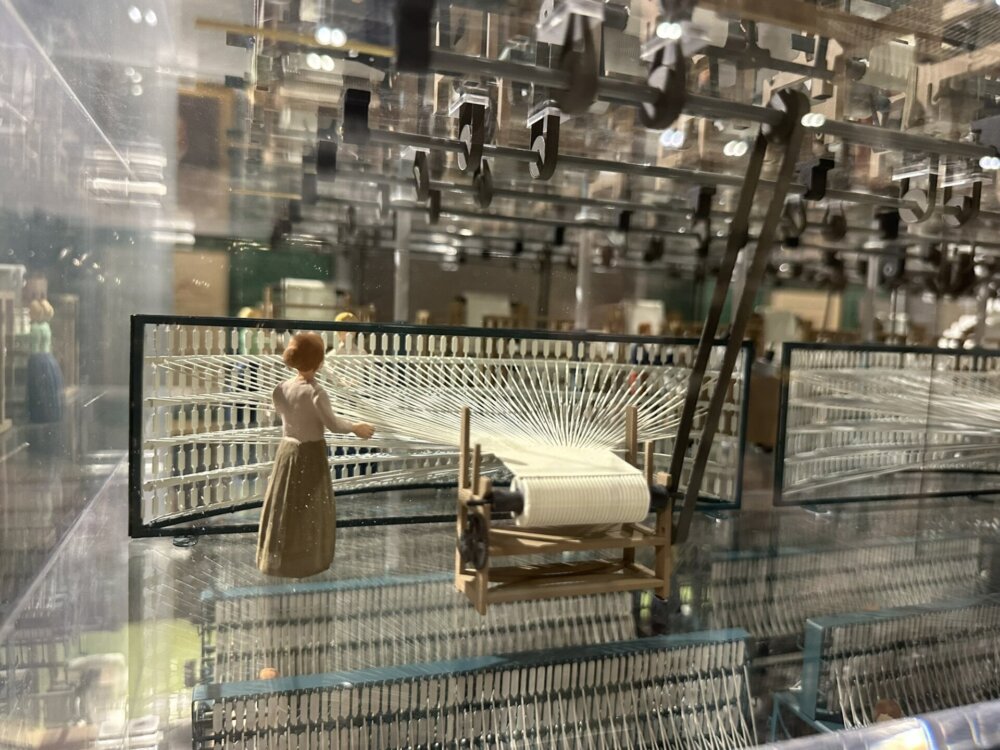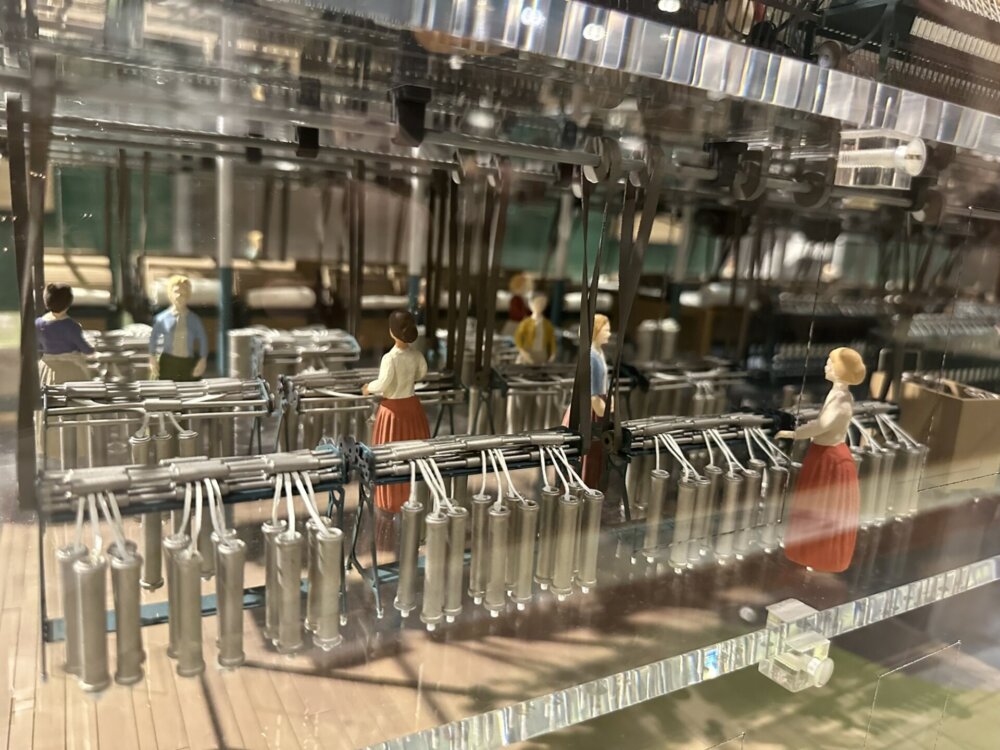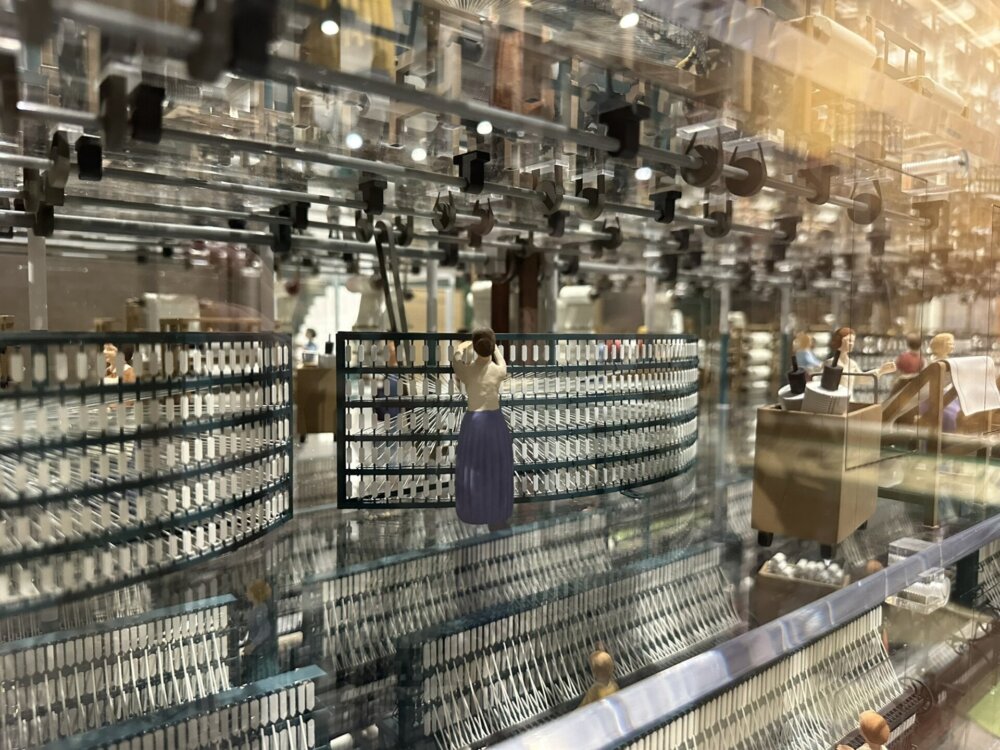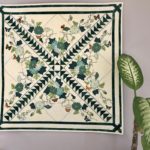If you are anything like me, I am always looking for a quilt museum or shop when I travel. Hopefully, the people in your life support this. 😁When I was given the chance recently to tag along with my husband on his business trip to Boston, I started researching the area for quilt shows, exhibits, and shops.
While I was surprised to not find any quilt shops in Boston proper, at least not that I could locate, I was over the moon to find the New England Quilt Museum just a short commuter train ride away.
I called my mom. She’s an avid quilter. Asked if she wanted to tag along. Yep. And we’re in cahoots.
I started researching what else was in this quilt museum town of Lowell, MA. Then I got REALLY excited. Lowell is an old cotton mill town. We ended up having a full day of the quilt museum, the Bootts Cotton Mill Museum, which is run by the National Park Service, and a tour of the Suffolk Mill which showed us the bowels of a cotton mill and how the turbines were run off hydroelectric power. It was a whirlwind of a day.
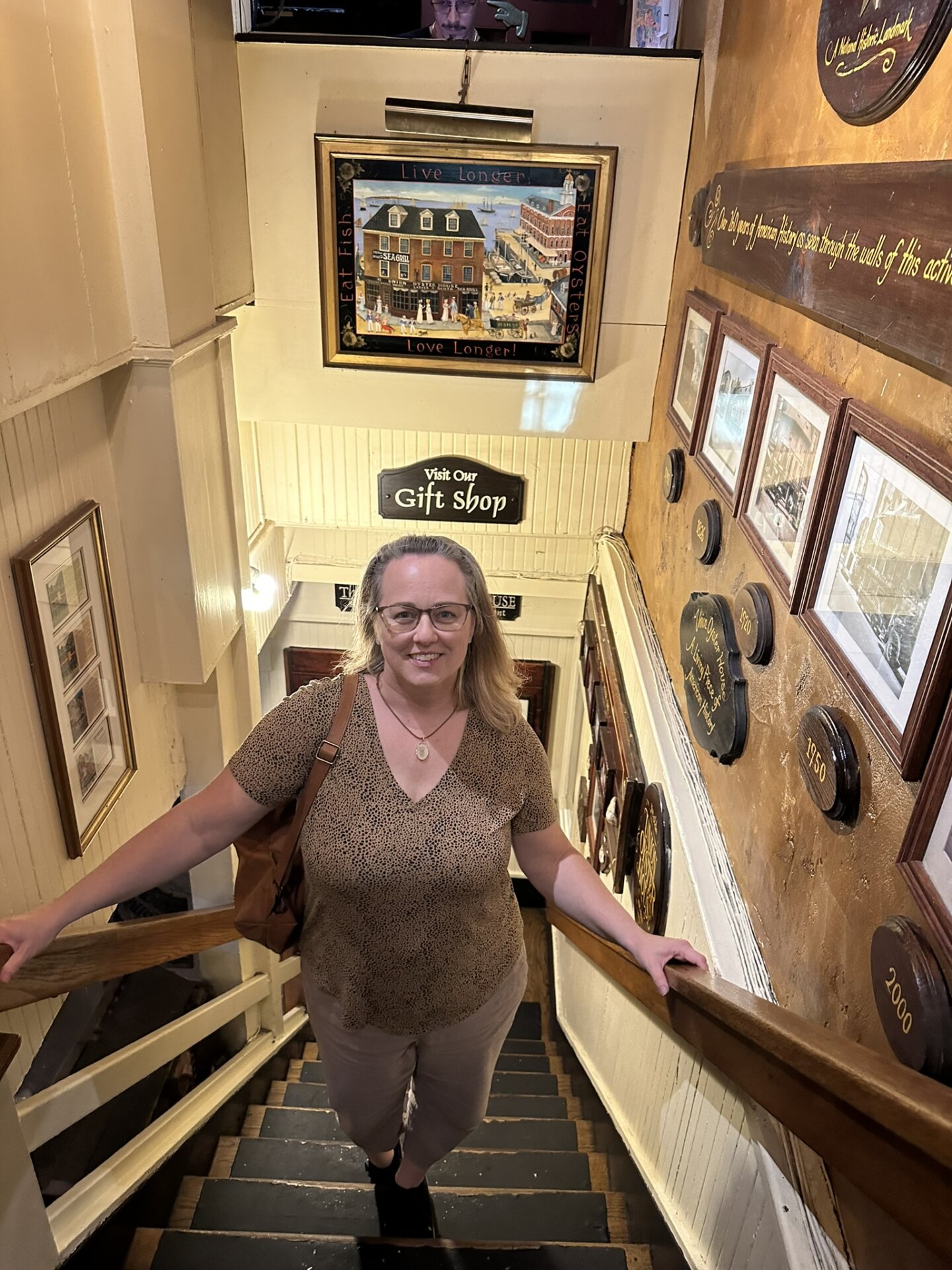
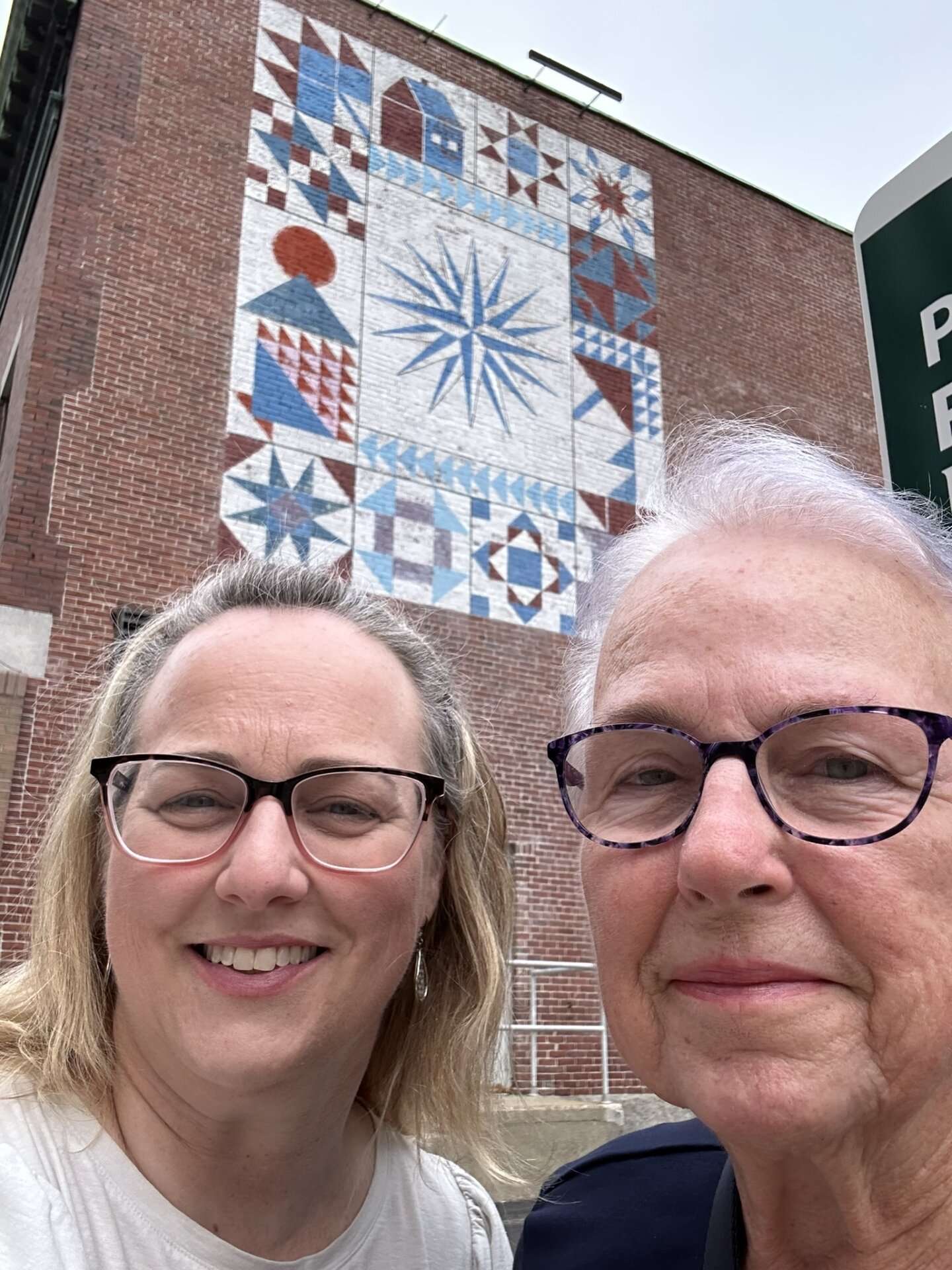
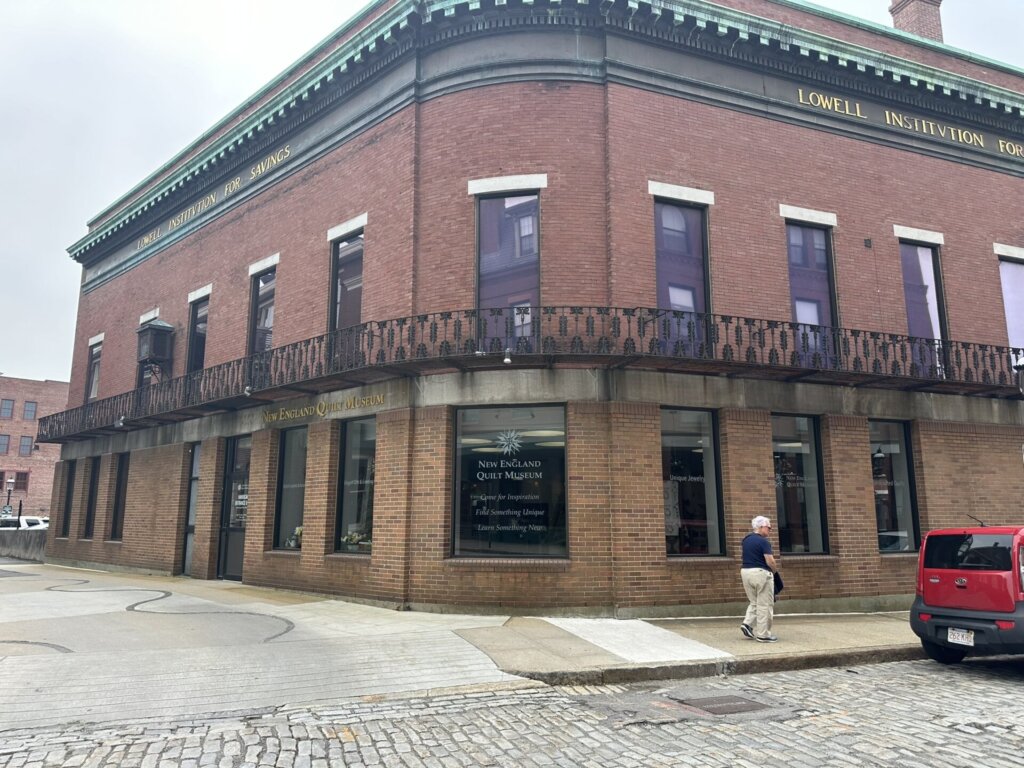
Figuring out how to get there was an adventure, but turned out to be really simple.
You take the commuter train out of North Station from Boston. Forty-five minutes later, arrive in Lowell – the end of the line. Get off and walk over to the shuttle bus stops. Ask which stop is the shuttle to the quilt museum (everyone in town knows where it is). Get on the shuttle. Tell the driver you need to be dropped off at the museum. Ten minutes later…you’ve arrived in quilter’s paradise.🛣️ Too dramatic? 🤭
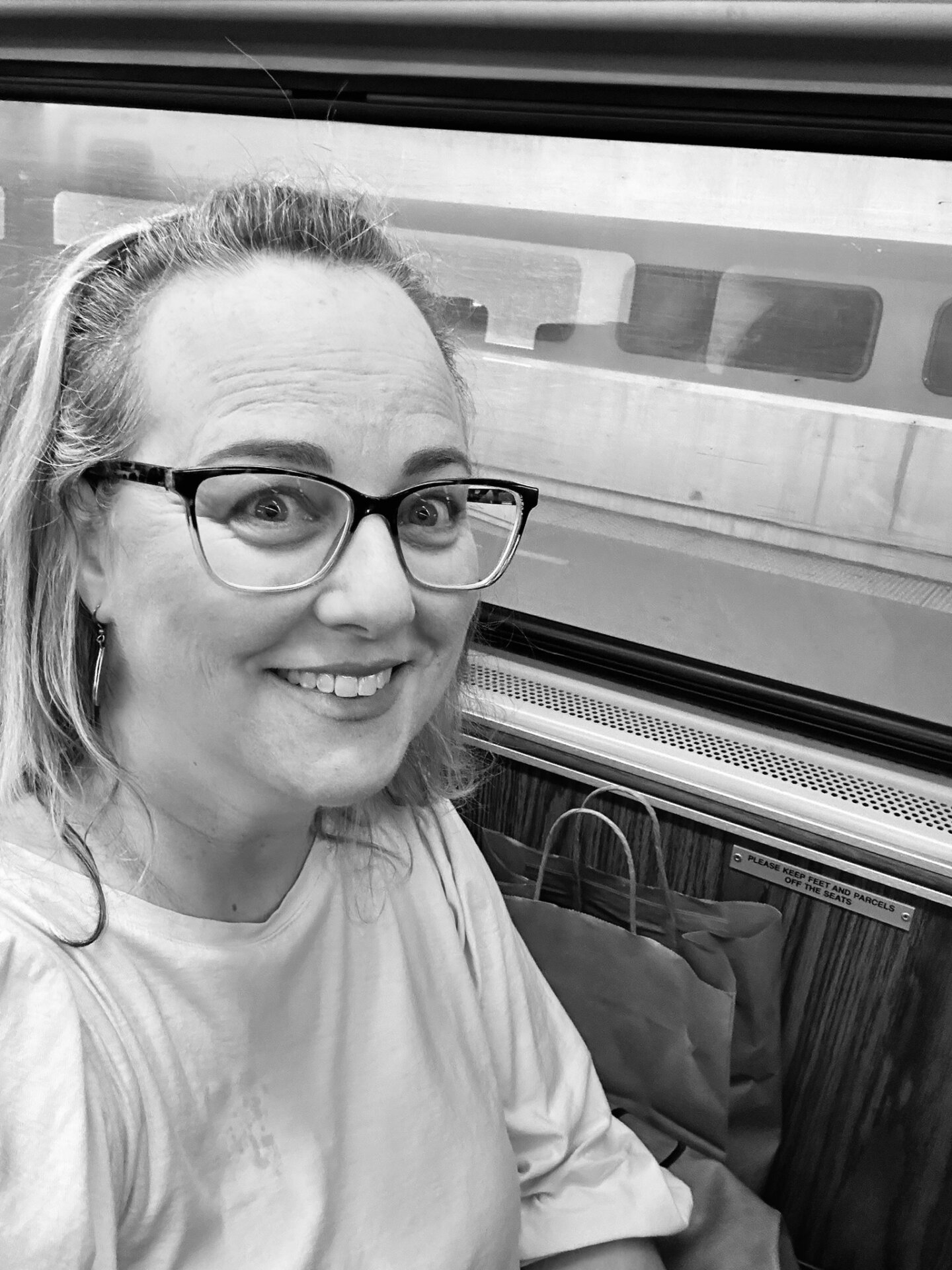
The Exhibits
1. Stitchpunk
I was over the moon when I realized SAQA’s StitchPunk exhibit would be on display while I was there! I love the innovative creativity of steampunk.
Steampunk is a design style inspired by Victorian era industrialism. In clothing, elements are replaced by leather and mechanical parts, like gears. It’s quite futuristic-fantasy, and frankly, badass!
Right away, “Stitchpunk Warrior” Minerva the mannequin greeted us at the start, expertly crafted by Kate Crossley. You can see Kate’s amazing textile art on her website here.
She left no spool unturned when it came to crafting Minerva with sewing related embellishments. A cross between regal and spooky, she drew you in as soon as you reached the top of the stairs. If only she could come alive!
I’ll just let Minerva introduce herself in the gallery below. ⬇️
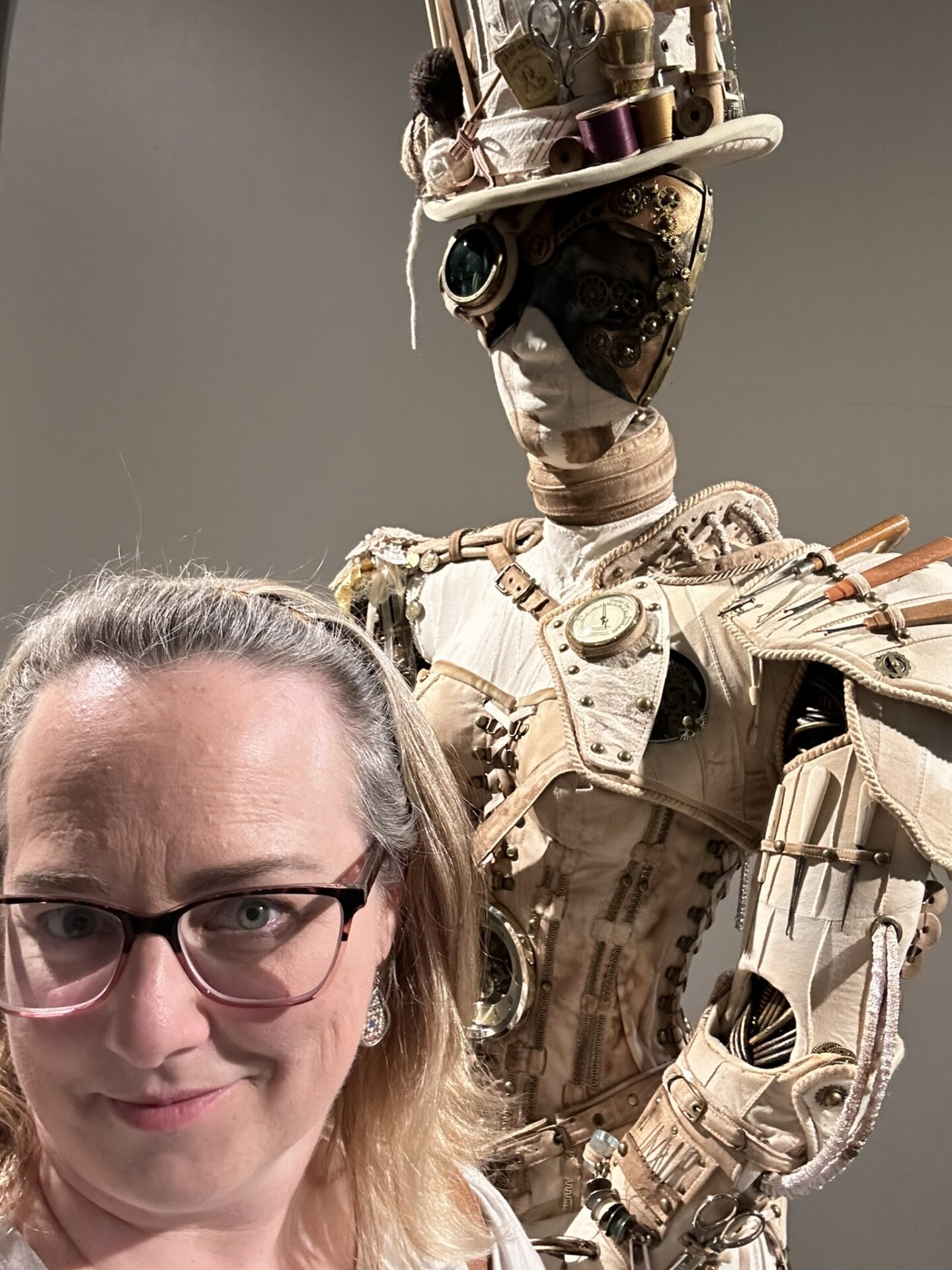
The rest of the Stitchpunk exhibit did not pale in comparison. Enjoy the gallery below of innovative, otherworldly quilted and textiled sculptures. It would take me forever to write this post if I listed each of the artists. I have linked here to the SAQA site featuring information about each artist.
I’d be remiss if I didn’t mention that joining the NEQM gives you the ability to check out materials from their extensive library. Yes, they ship!
Domestic Partners Exhibit
The next featured artist exhibit was the work of Dawn Allen. If you haven’t “met” her yet, she does innovative work creating digital fabrics, digital portraits, then quilting the heck out of them. Her work shows people and their pets.
The exhibit included details about how she makes her quilts.
My takeaway as a textile lover was that although her creations are no doubt amazing from a distance, up close I really enjoyed finding the little “secret” patterns in her fabrics.

In House Collections on Display
Finally, we get to the museum’s own collections!
While I was there in March 2024 there were two exhibits from their own collections:
- Yellow
- Log Cabin & Crazy Quilts
I was impressed the “Yellow” exhibit featured fairly recently made quilts, not only antique quilts. There was quite a variety of styles.
Did you know?
Log cabin quilts were traditionally made with a red center to signify “hearth” – warmth in the home as the center of a home.
I never knew that!🤔
This vintage one actually had a log cabin pieced in the center. Love it!
Included below is one of the crazy quilts on display. I love crazy quilts and how they reveal little secrets up close.
The Cotton Mills
An absolute unexpected highlight of the day trip was visiting the cotton mills! Lowell is an old cotton town and its cotton history is preserved through the amazing work of the National Historic Parks services. Seeing those beautiful enormous brick buildings up close takes your breath away. We were lucky in that they had just that day opened for the season!
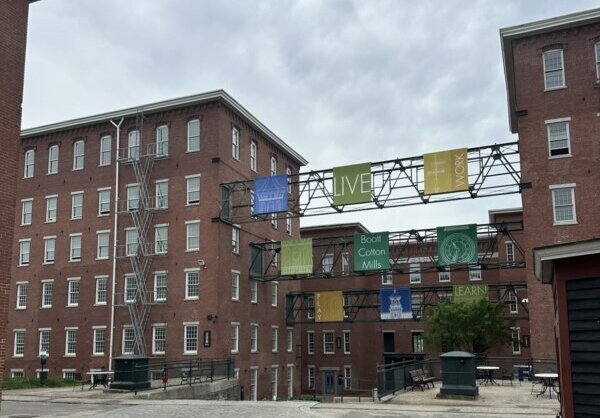
We arrived in the afternoon, just in time to take the park trolley to the Suffolk Mill just down the road. (It’s all free!) The guided tour from the park ranger was just amazing. The trolley ride through the city was a treat (pleasant weather was a plus), then we got to go down below the mill to see how the turbines were powered with water strategically released from the dams of the Merrimack River. It was all so fun to learn about.
Then, there was the Boott Cotton Mills museum (run by the park service so you get to stamp your passport). This museum still has the looms which they run for visitors to see. Seeing so many of them in the room makes you wonder how it all worked. Well, on the top floor is the museum. Learning about the girls who worked there, the boarding houses they lived in, the immigrants who later worked there, and the working conditions they all endured was just so fascinating.
To fill you in on a little of the history, rural New England farm girls were first recruited to work there. Their parents largely agreed to let them go because they would live in boarding houses, where they were supervised, provided meals, had a curfew, and were expected to go to church. It was quite an adventure for these young ladies to live in the city and meet other girls their age from all over the area. However, once the reality of the working conditions set in – 10 hour days, hot, repetitive work, – let’s just say the bloom fell off the rose, and many returned to their family farms.
I loved this diorama showing what happened on the different floors of the mill.⬇️
After their mass exodus, mill owners realized they could hire immigrants for much less money, and thus began a mass influx of Portuguese, Polish, and Greek immigrants. This certainly enriched the cultural landscape of the area.
The horrible working conditions led to strikes and eventual unprecedented labor laws.
This was all so interesting to learn about both in the museum, and in the gift shop. They had lots of books written about the people and the history of the factories and the town.
Have you been?
Have you ever been to Lowell? I would love to hear your experience in the comments below. I cannot wait to return someday with more time to spend there.
See It on YouTube
I have three videos of the museum on YouTube, The first one is linked below.

